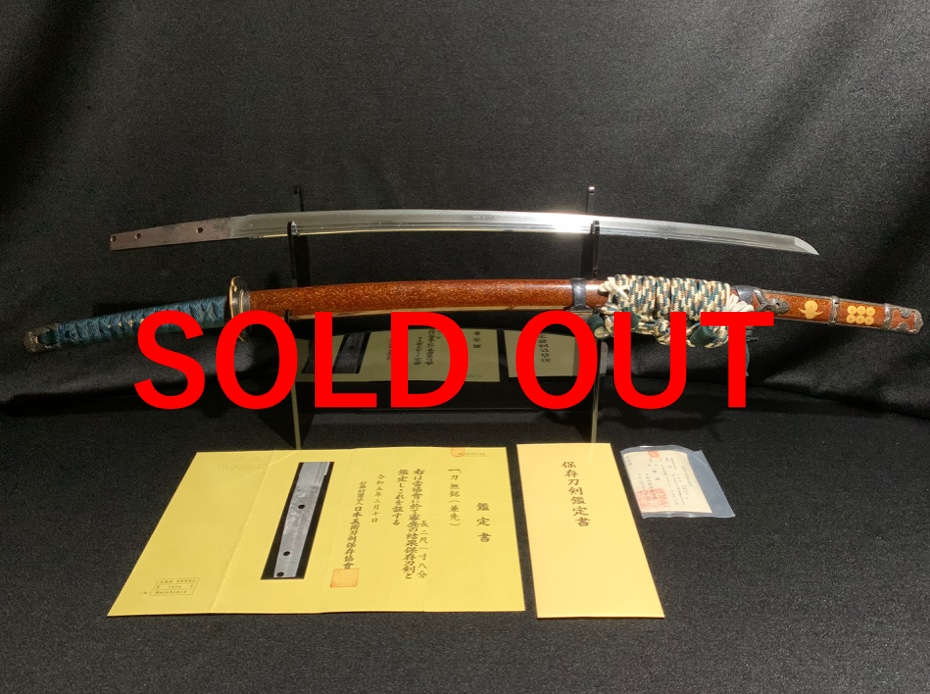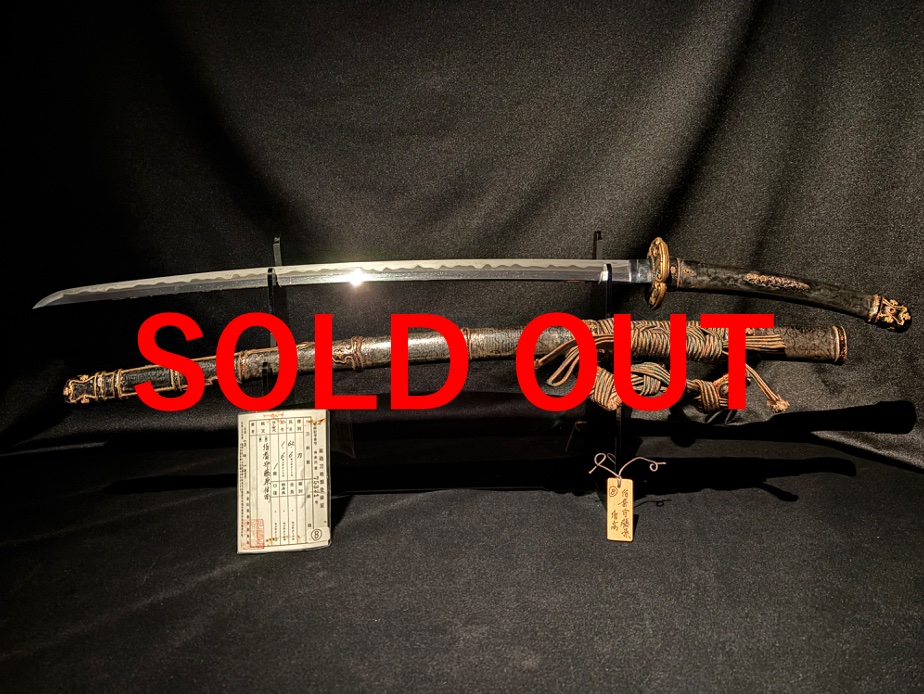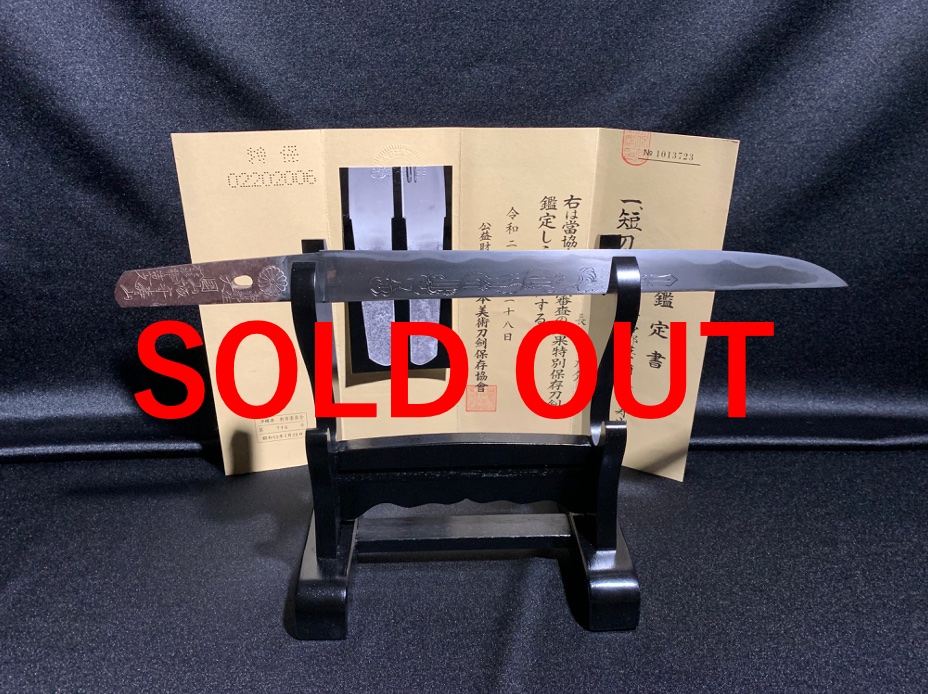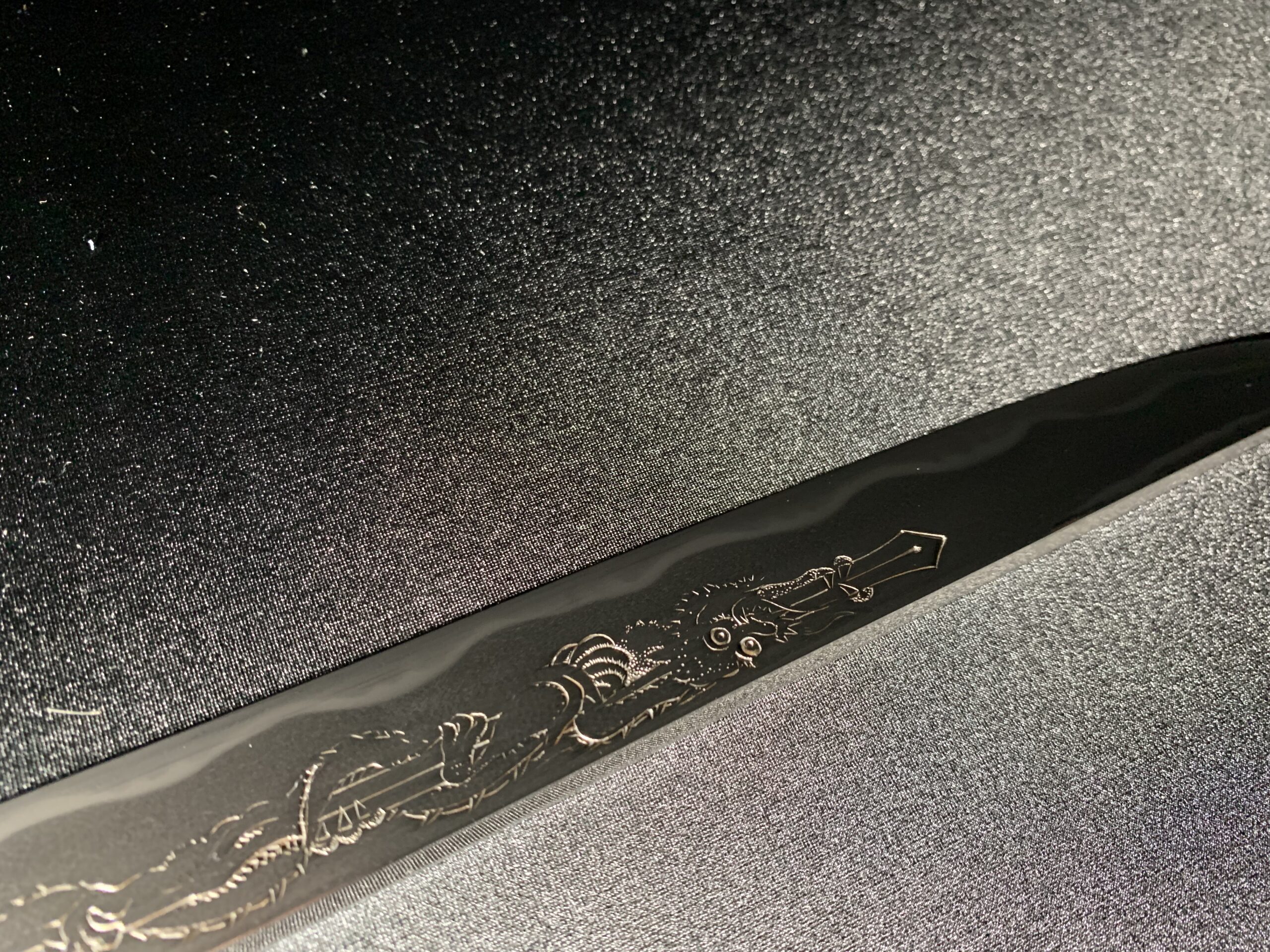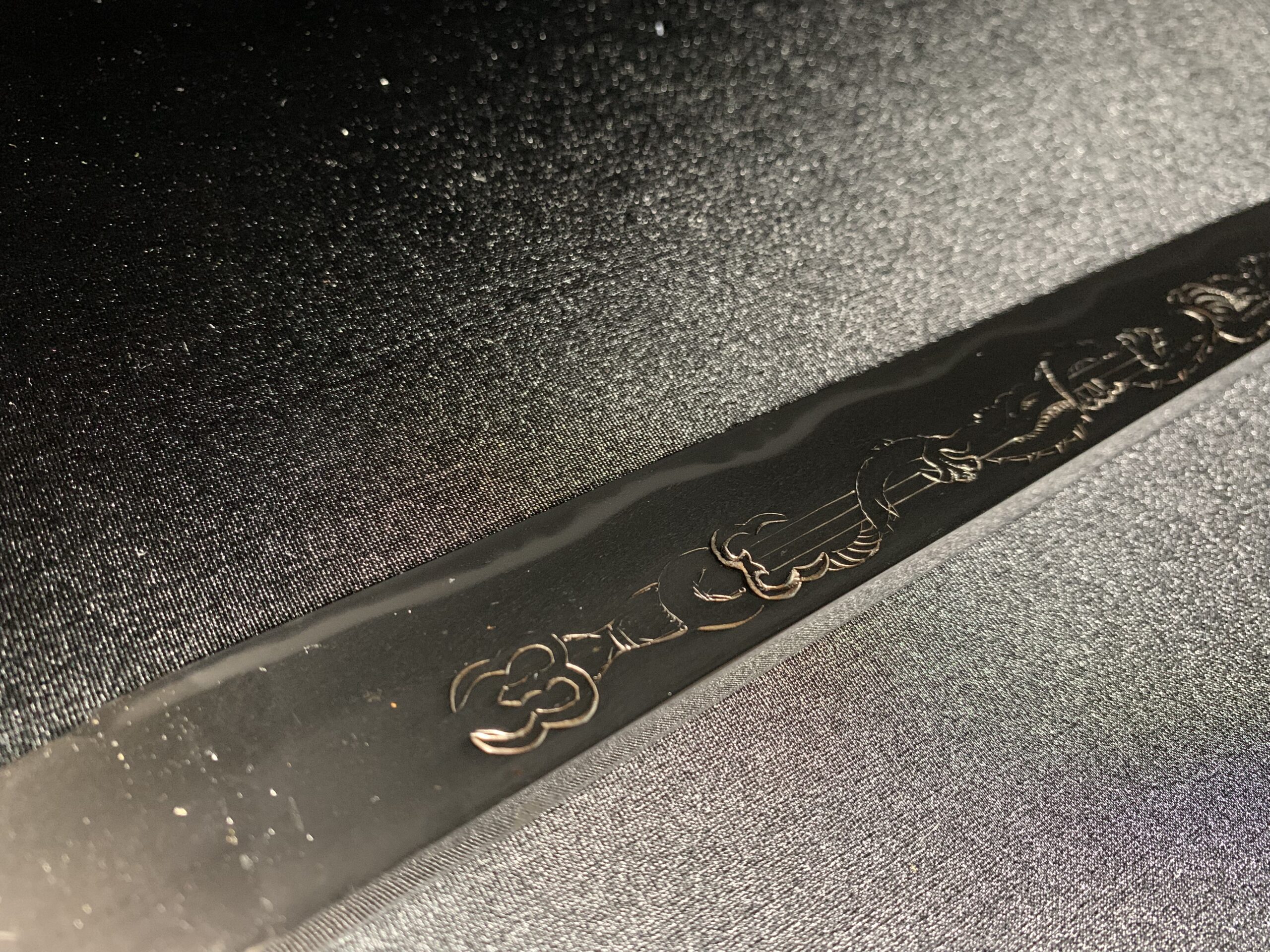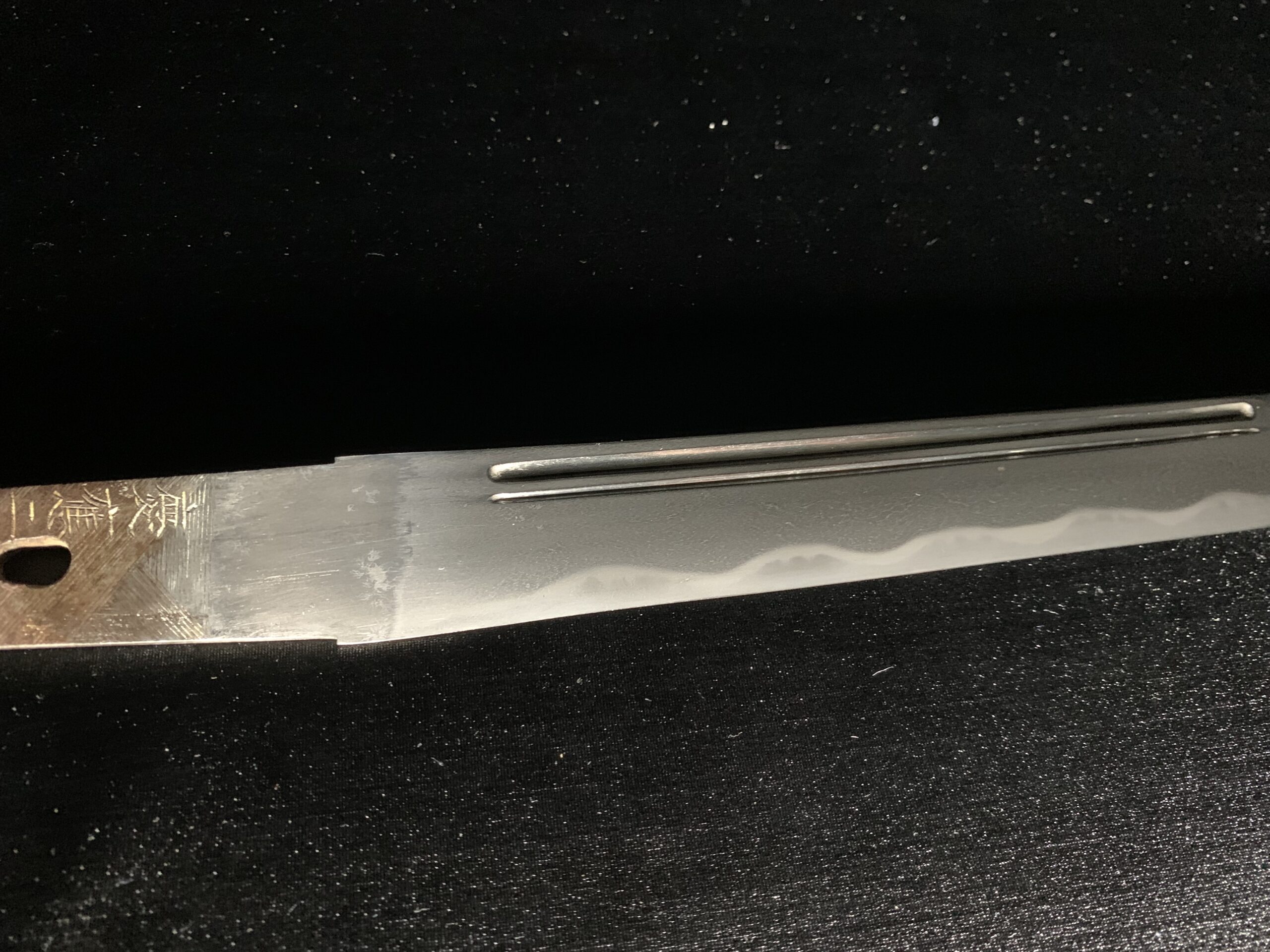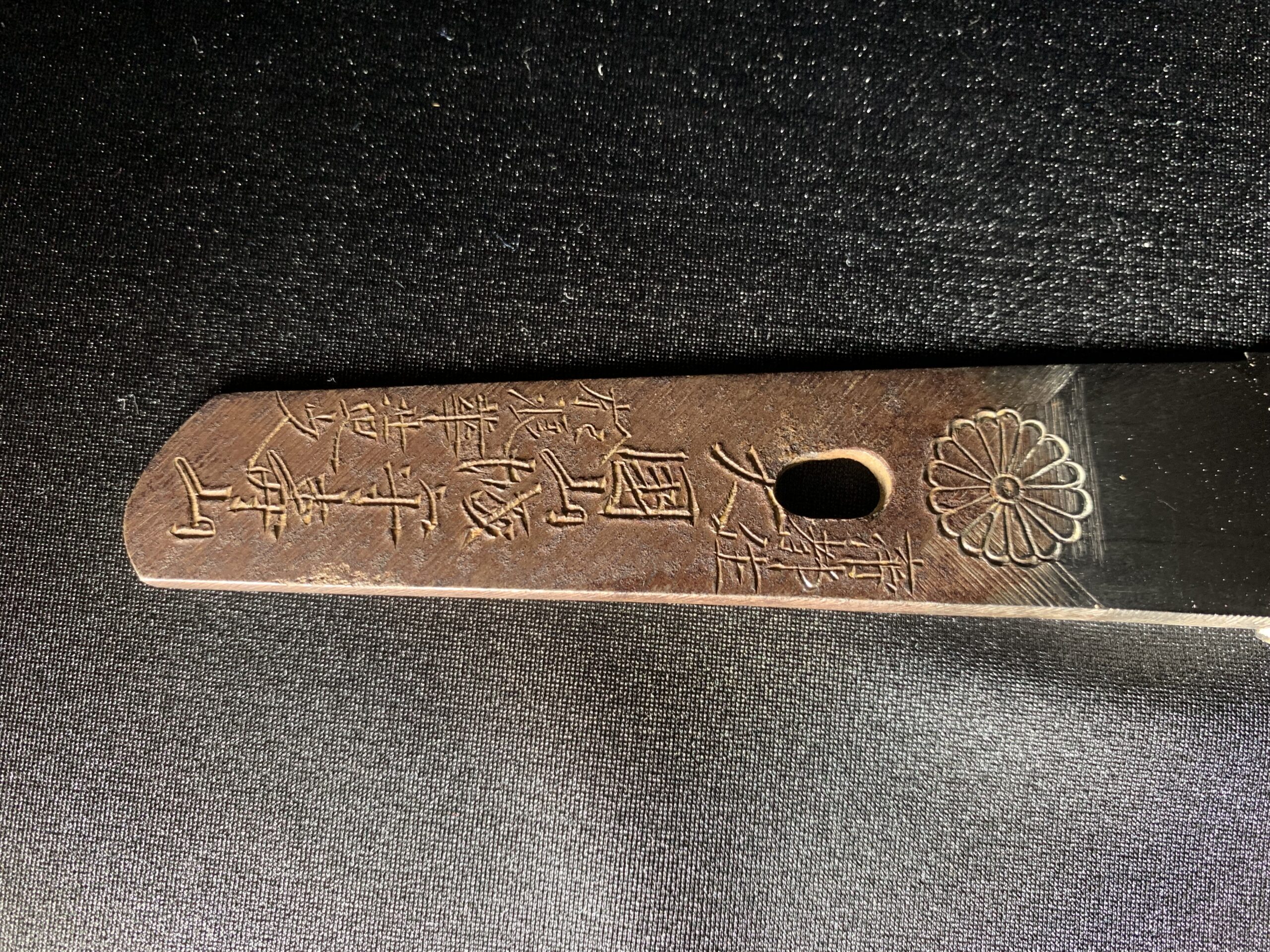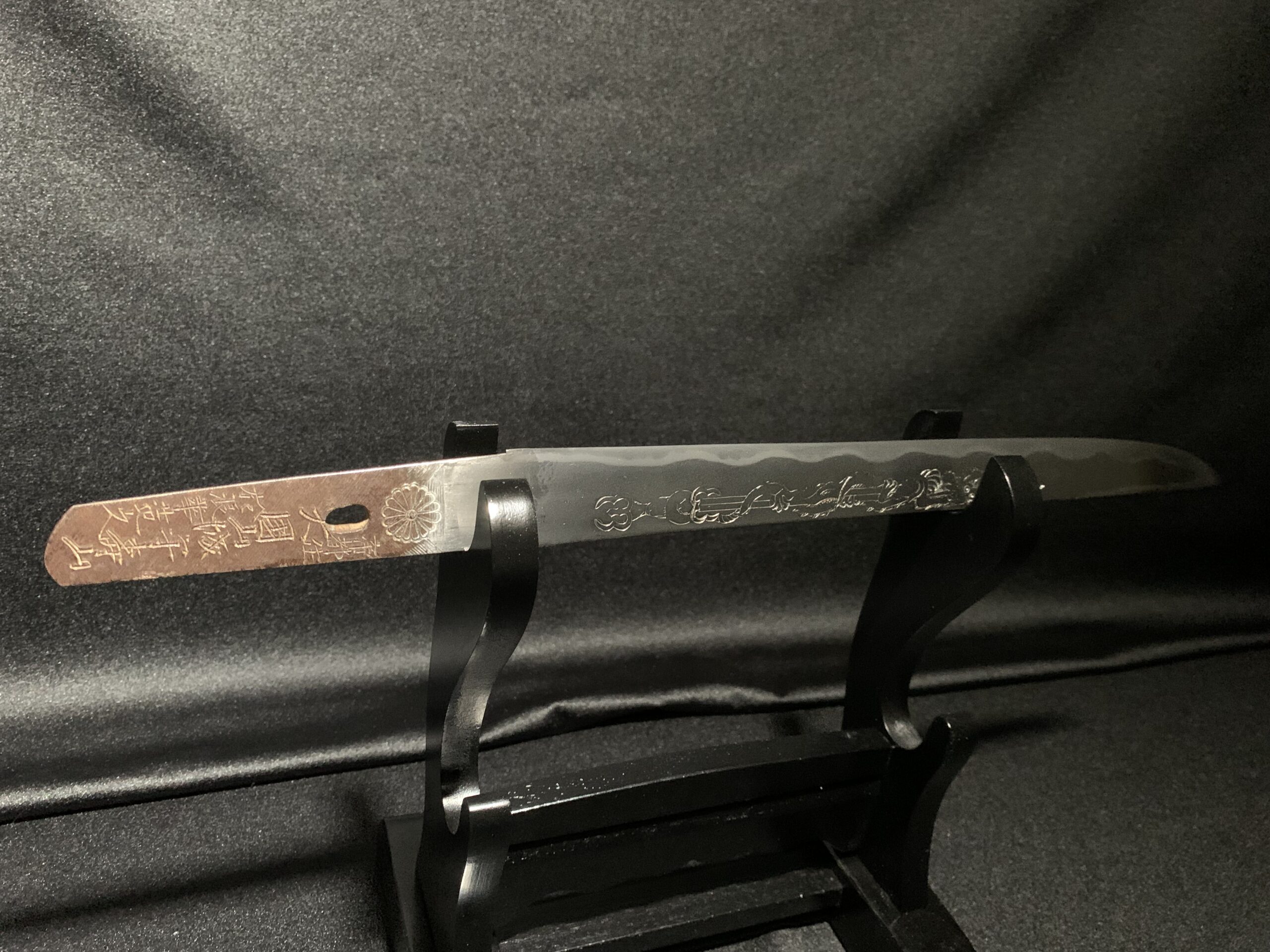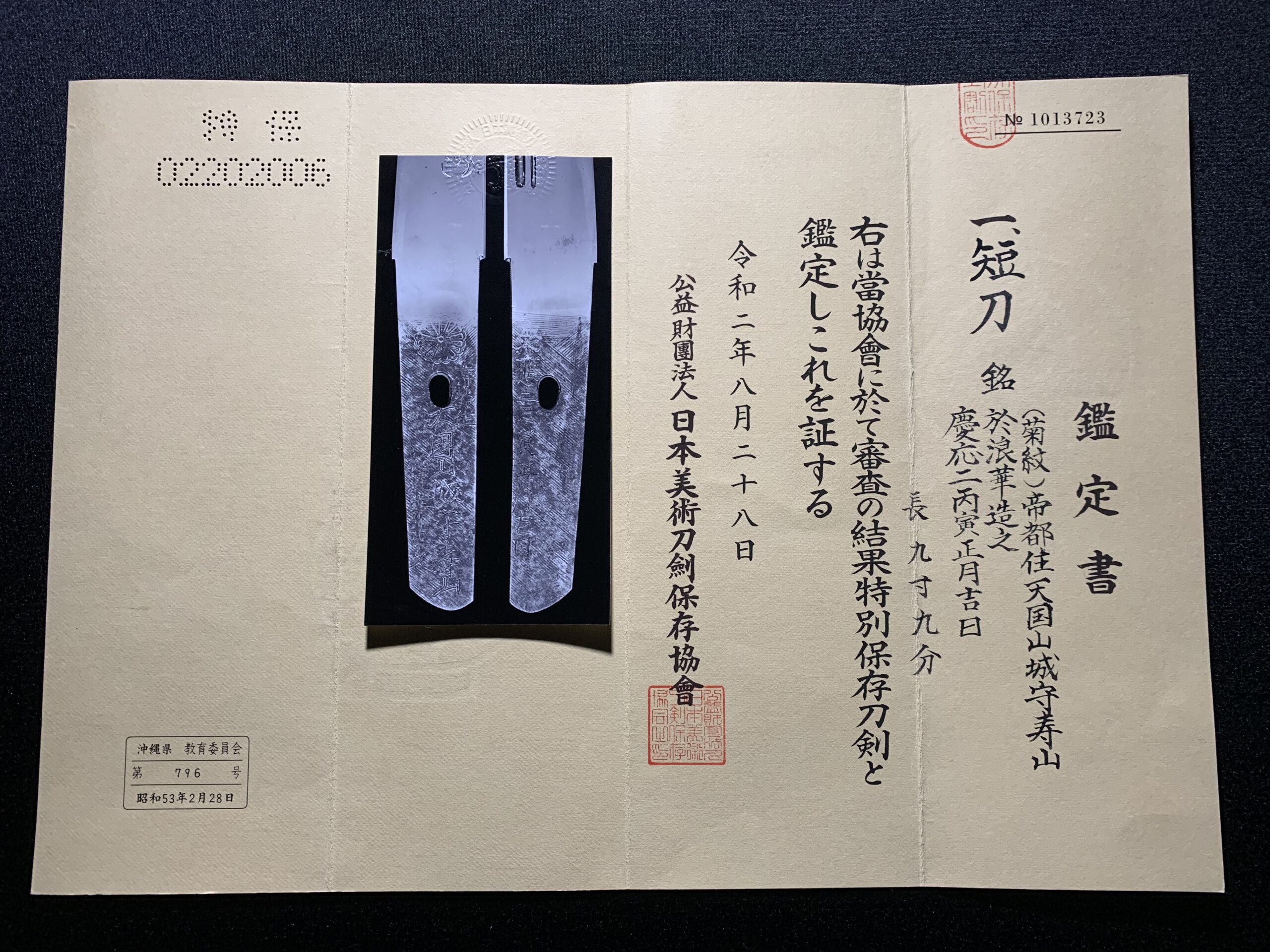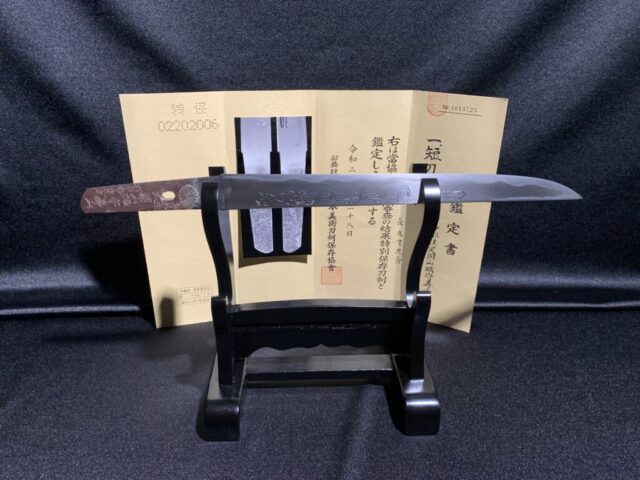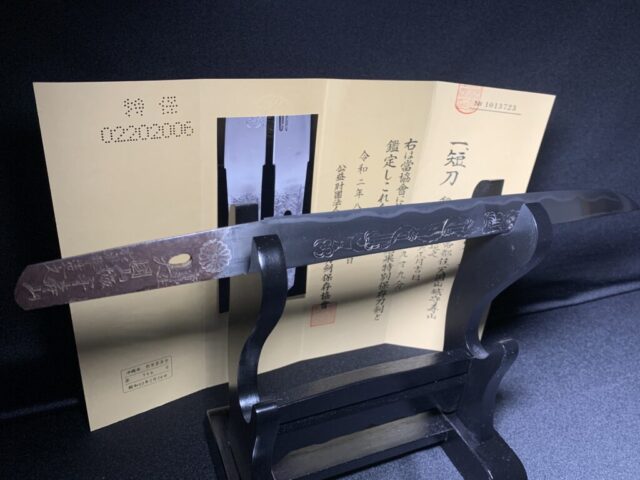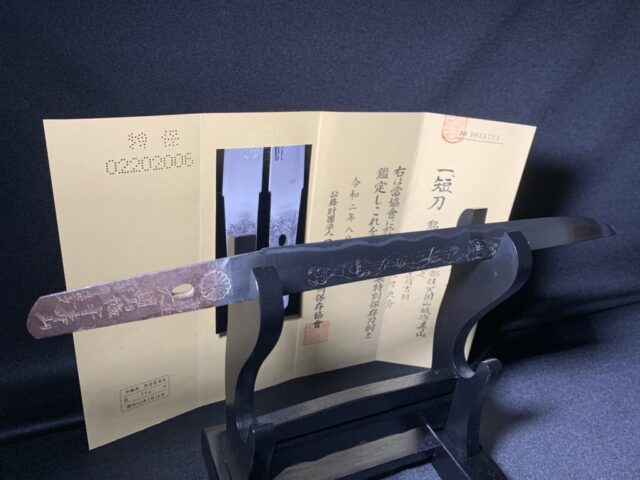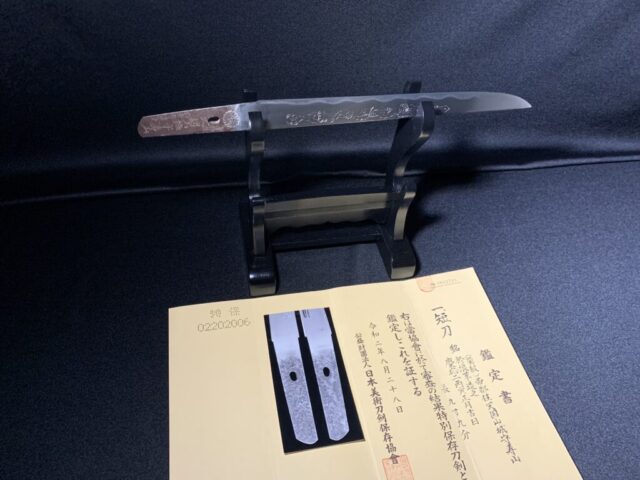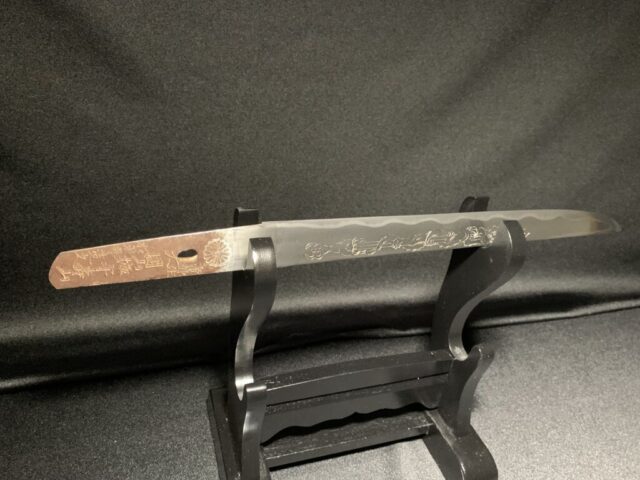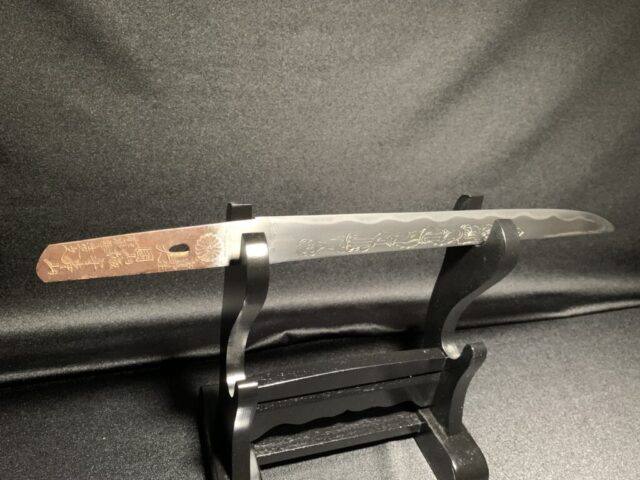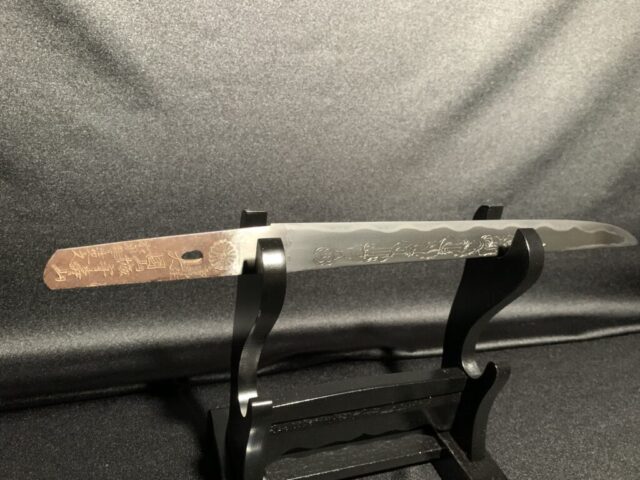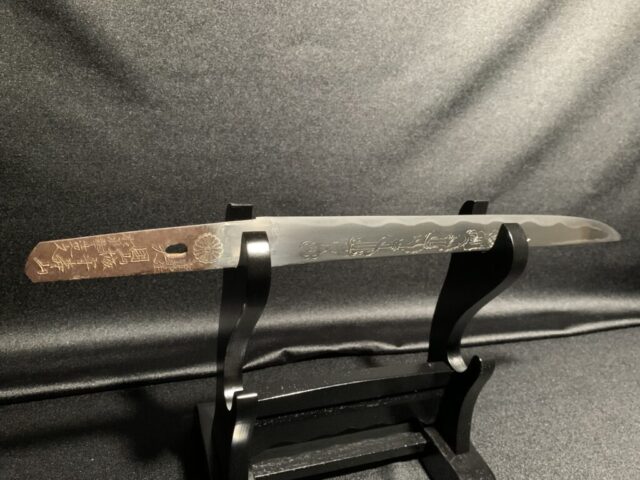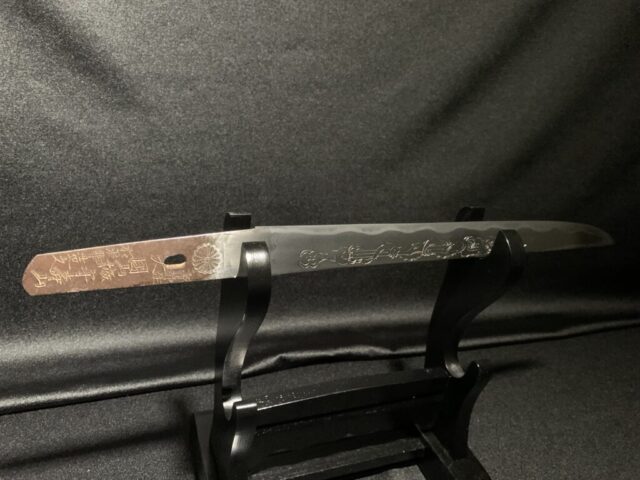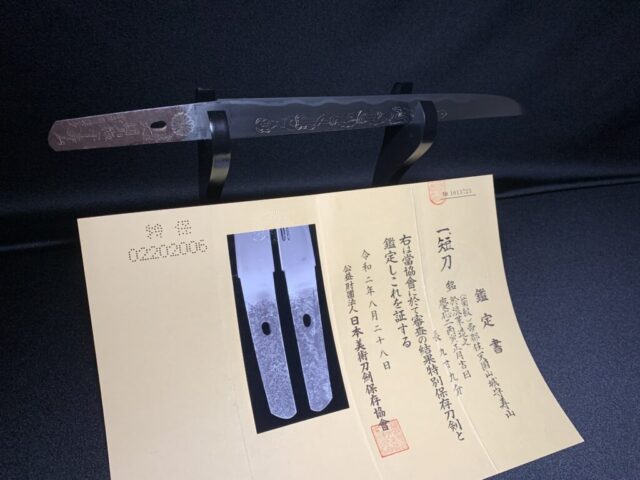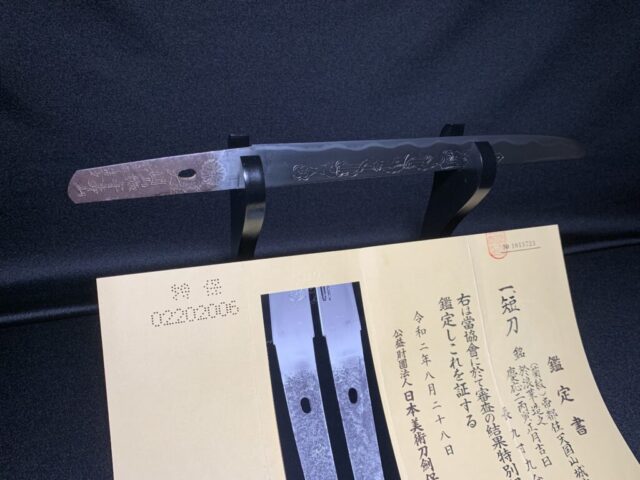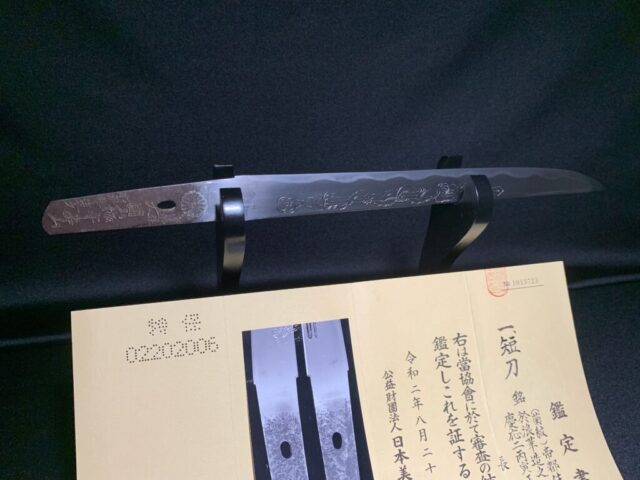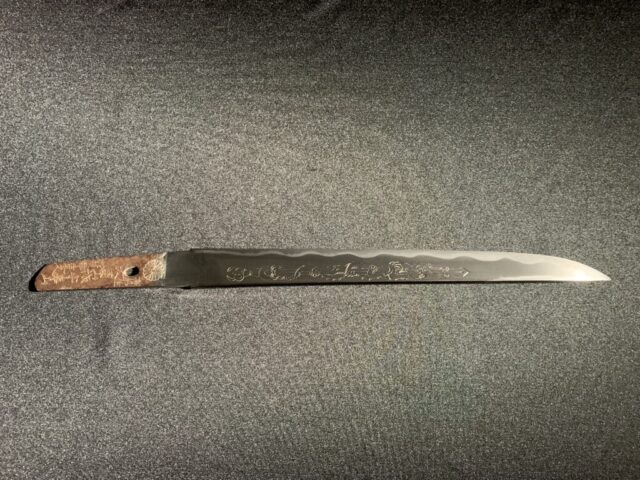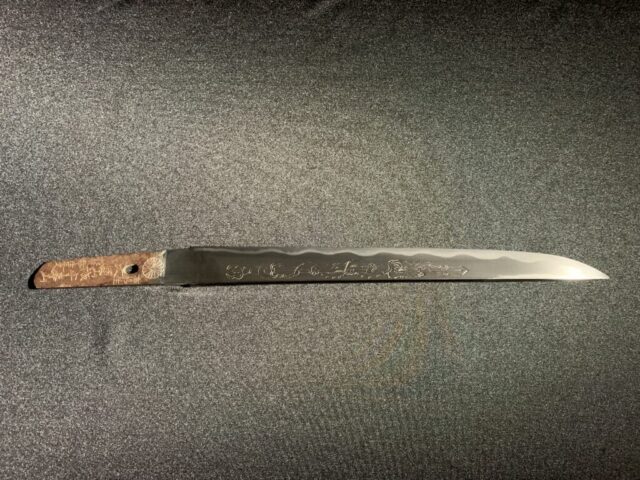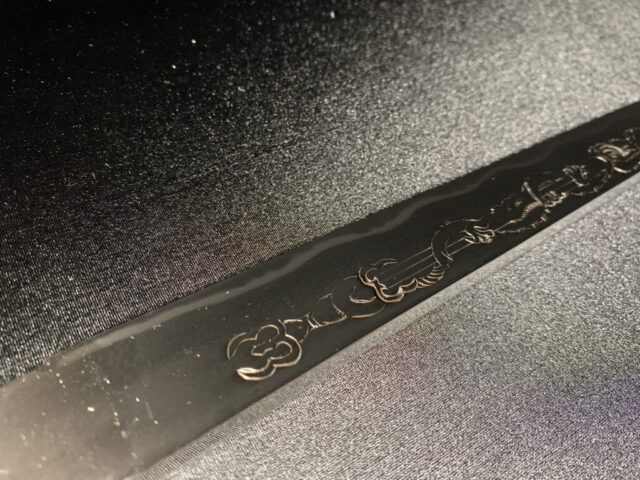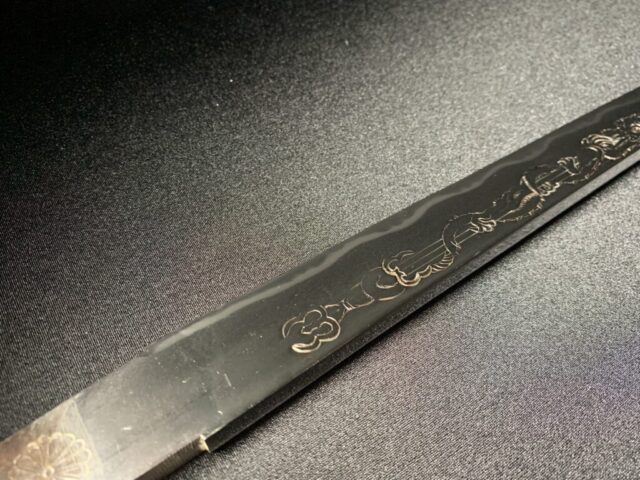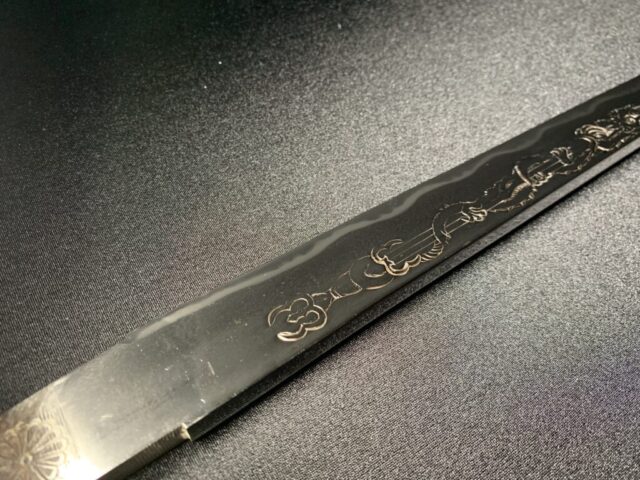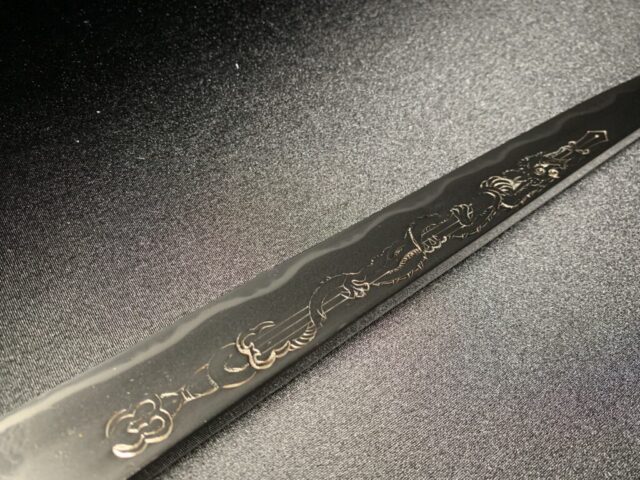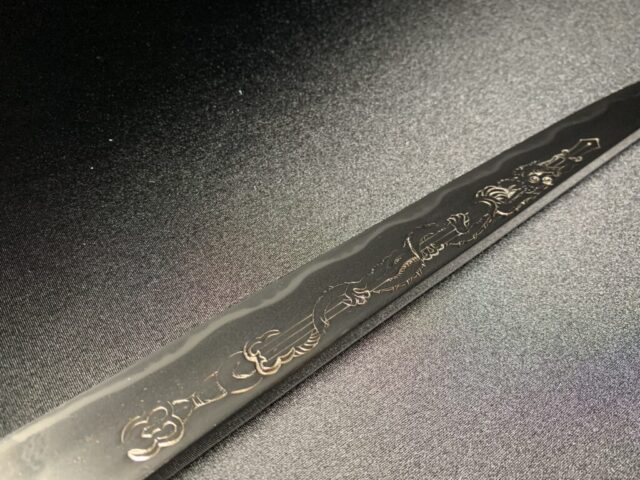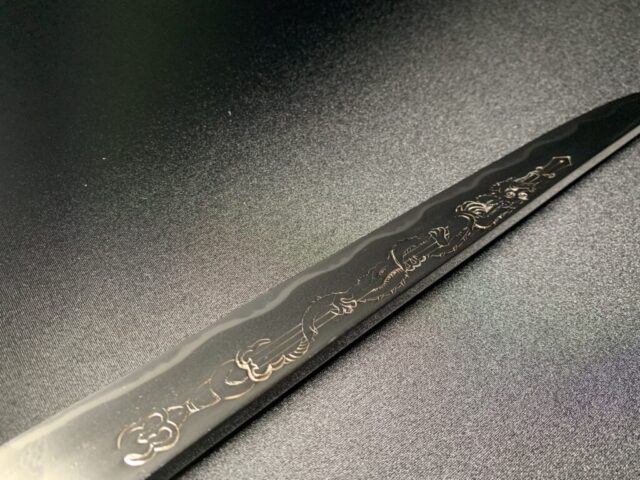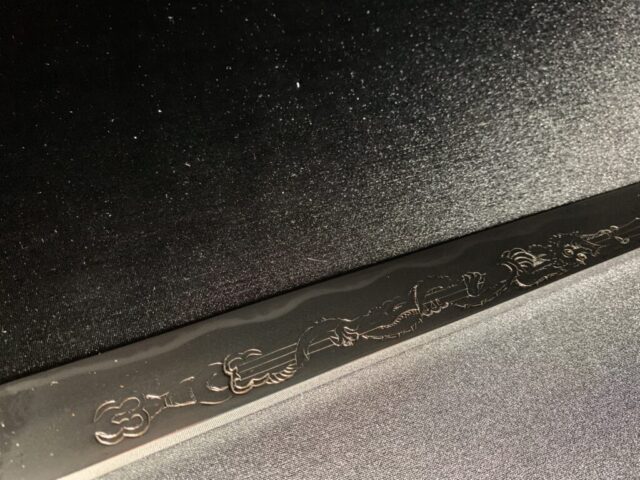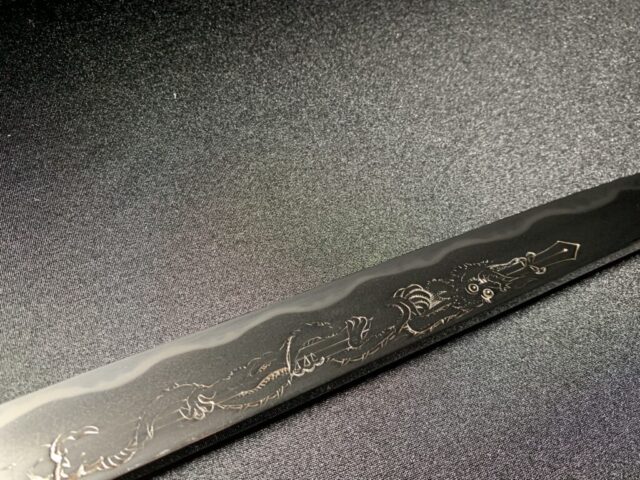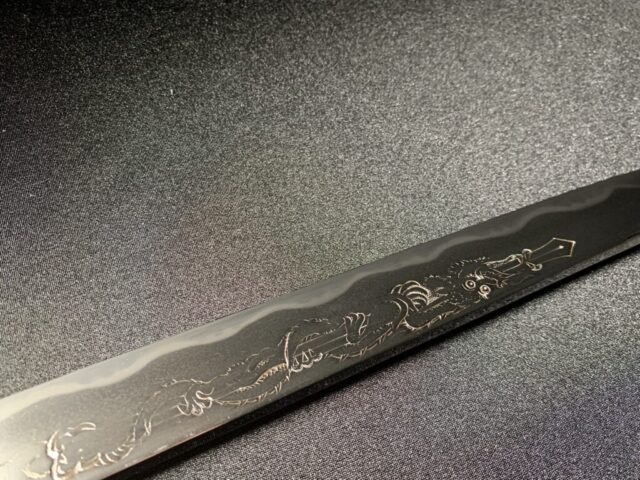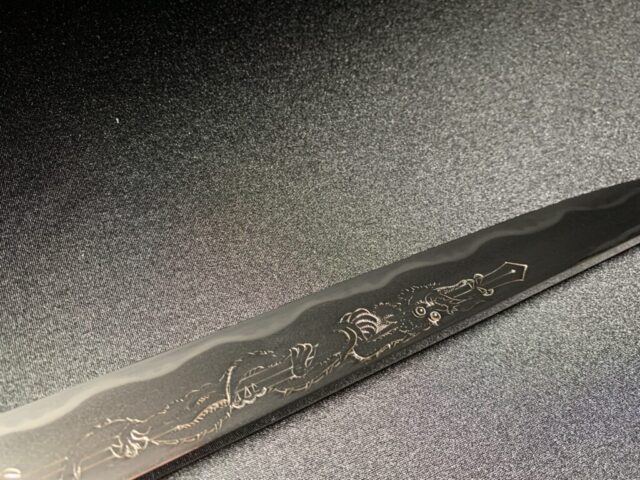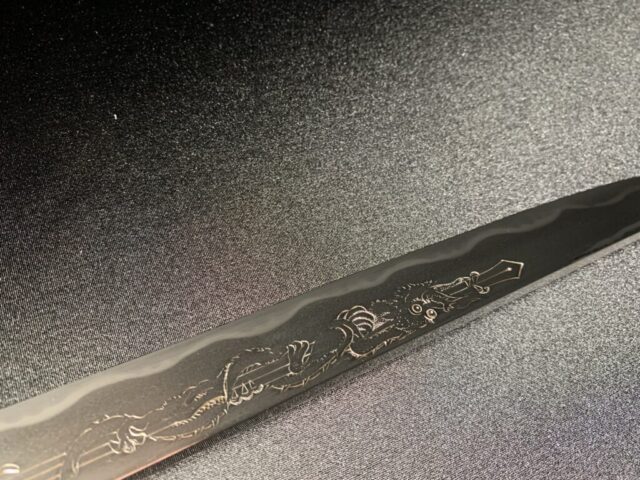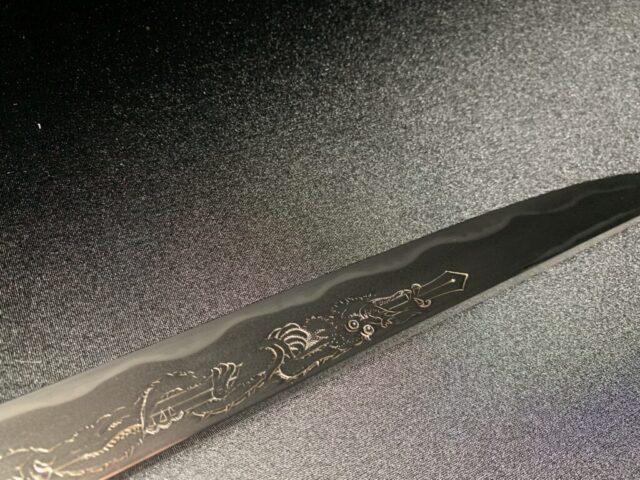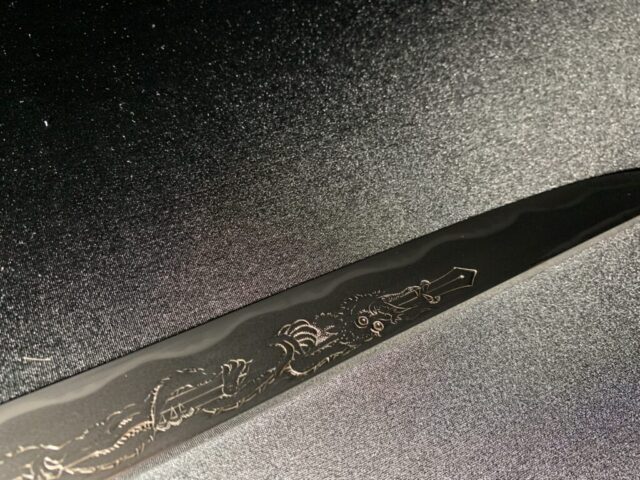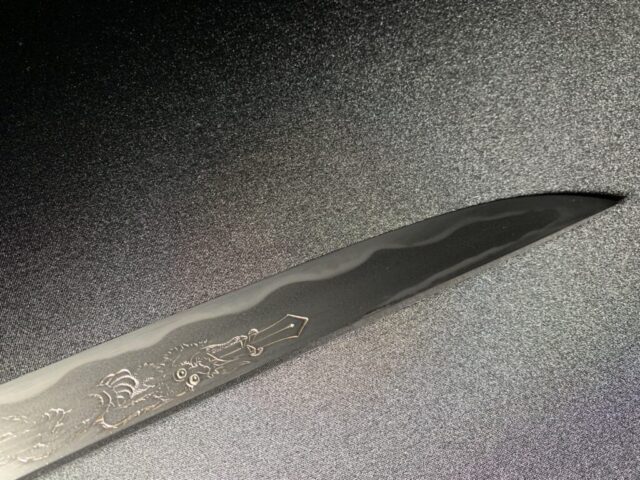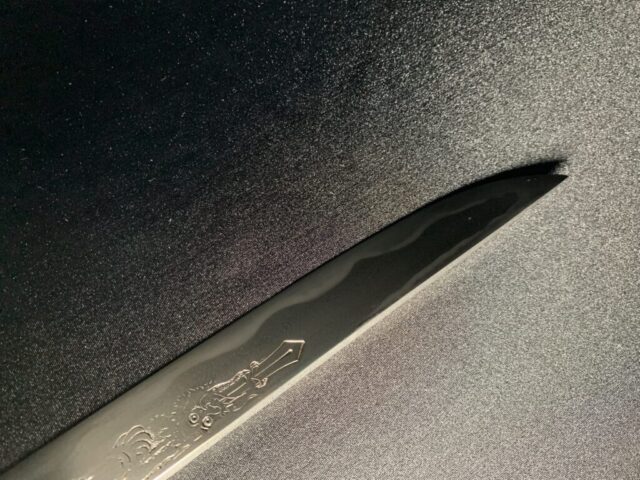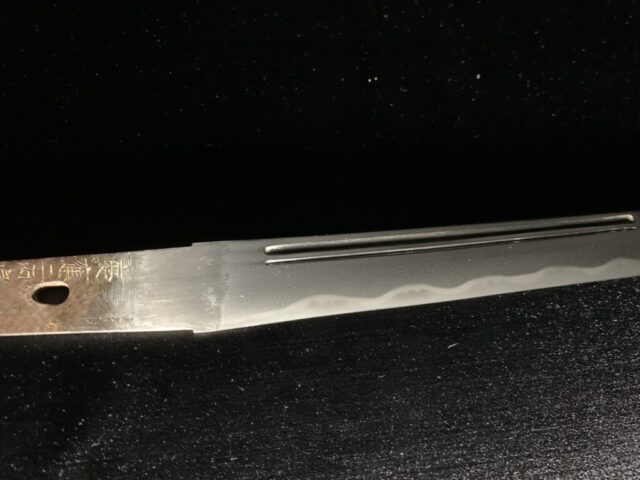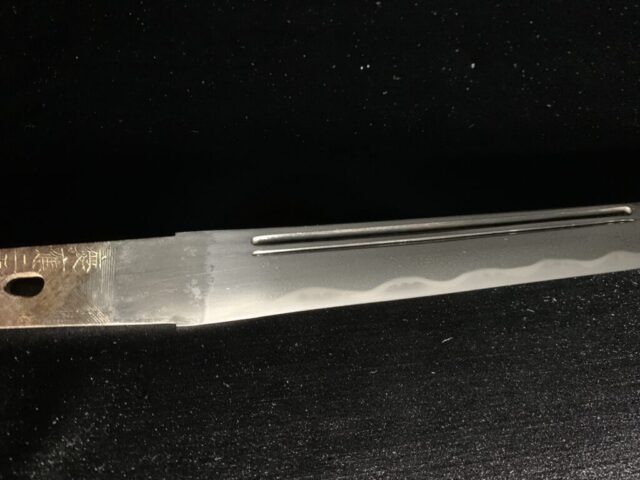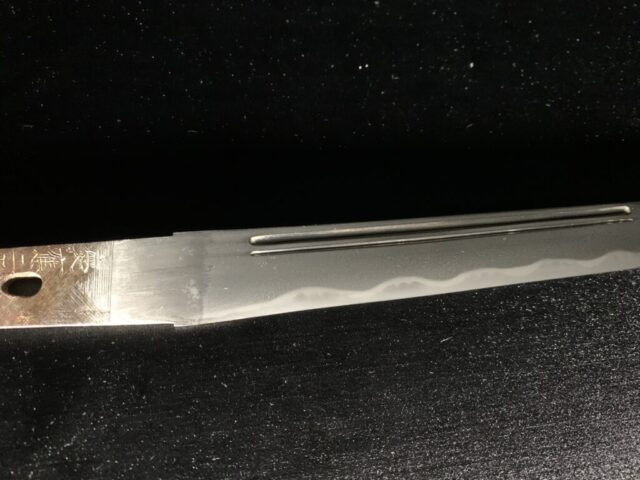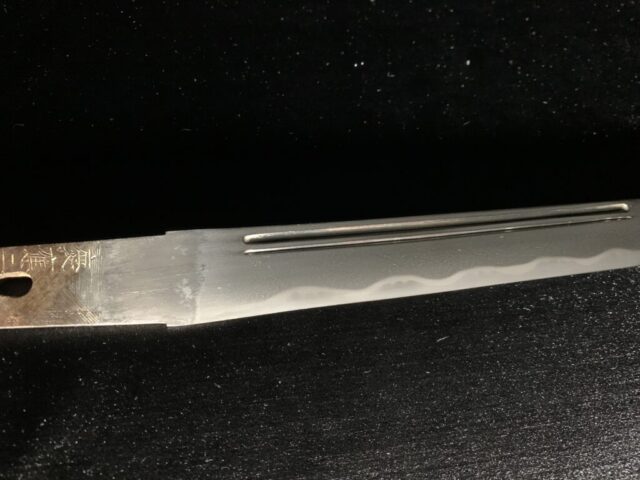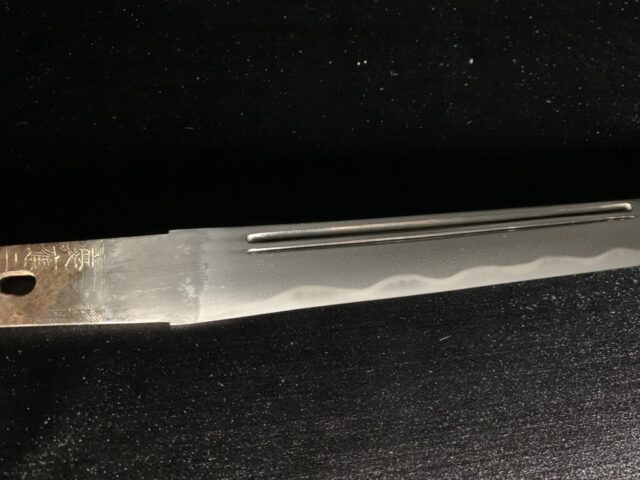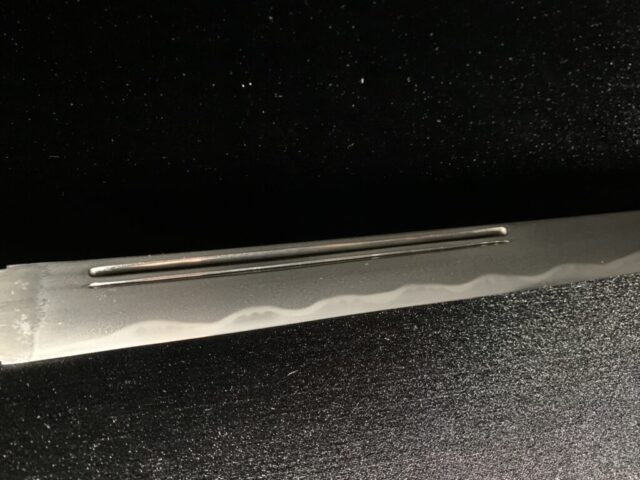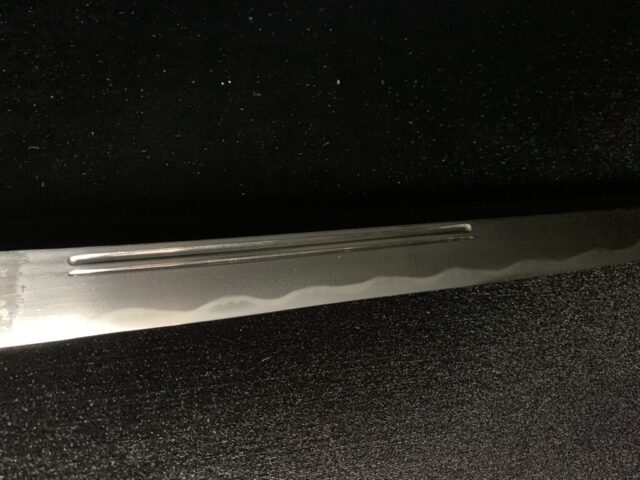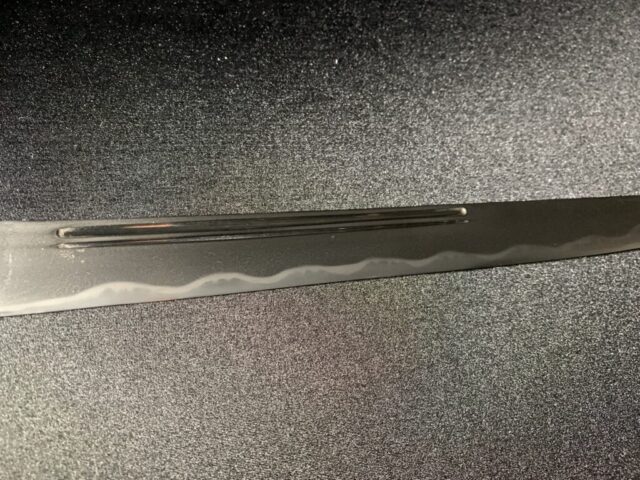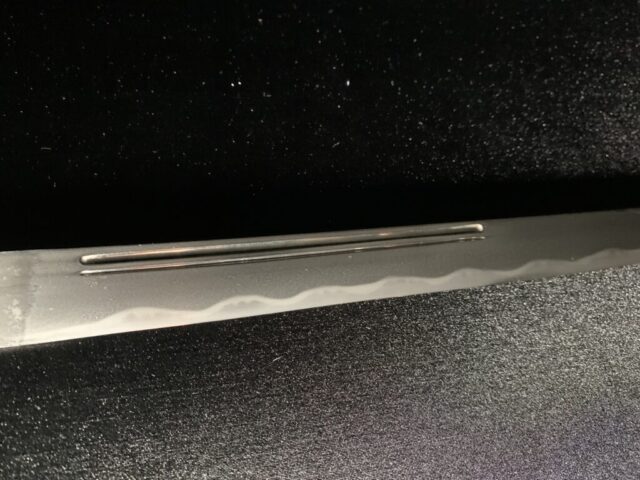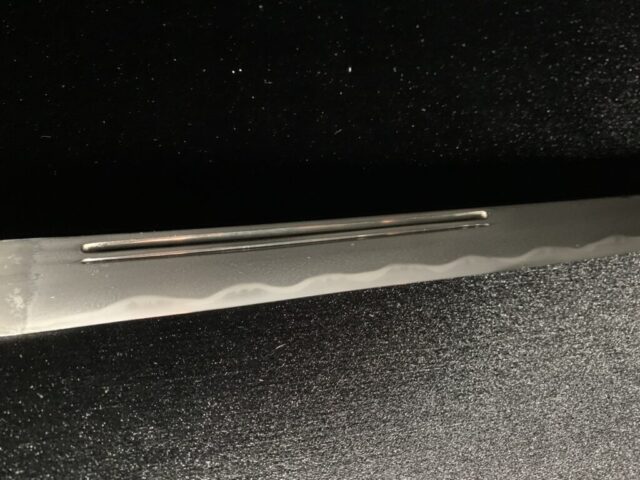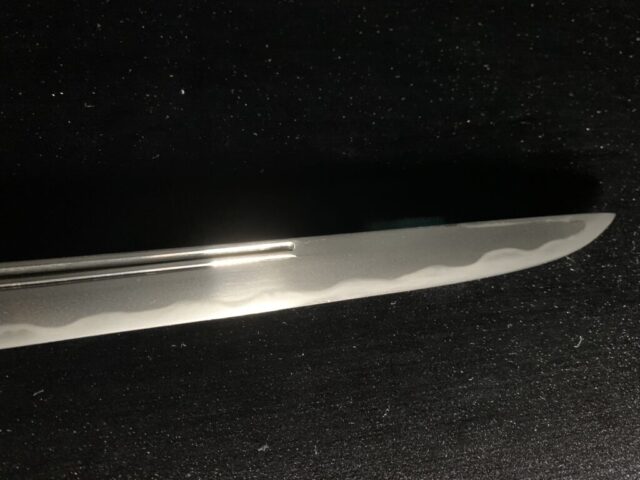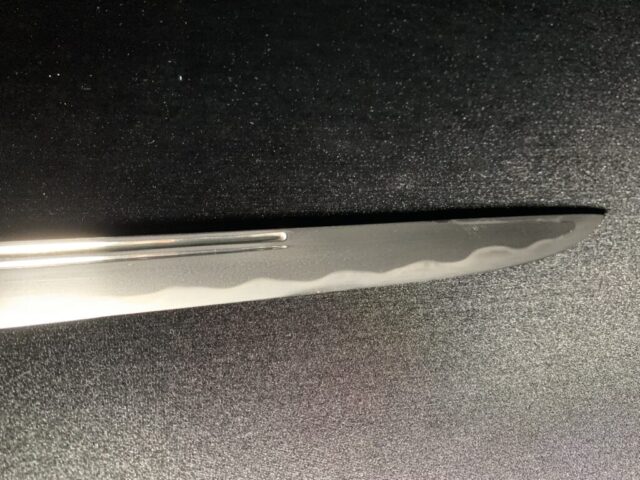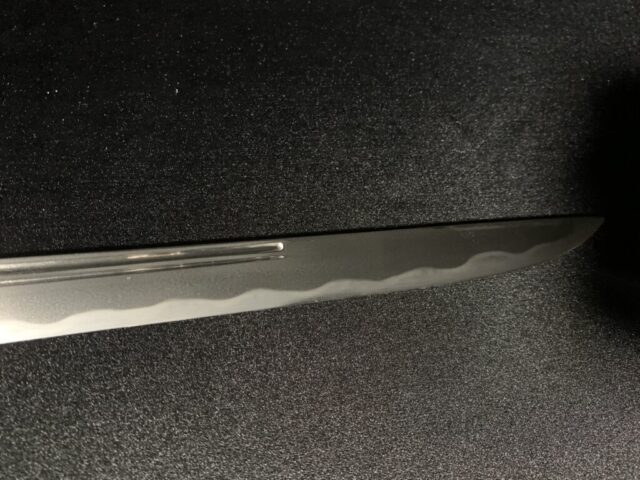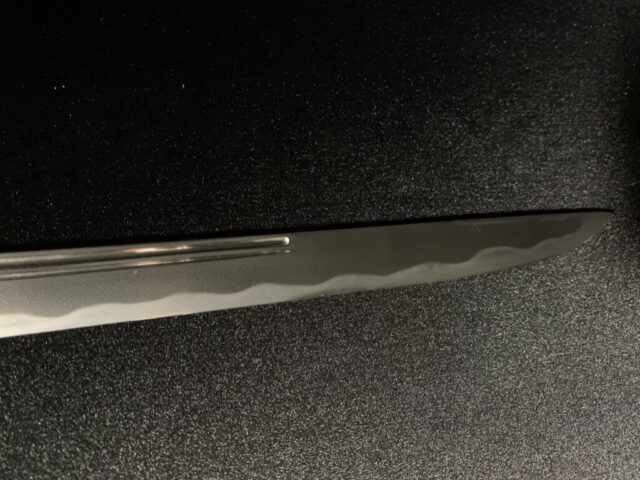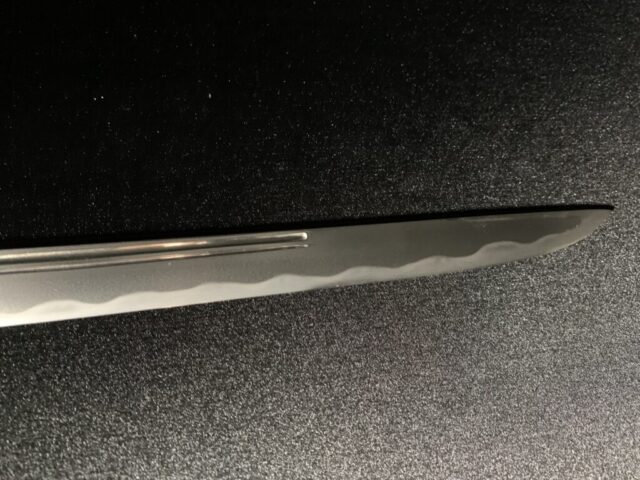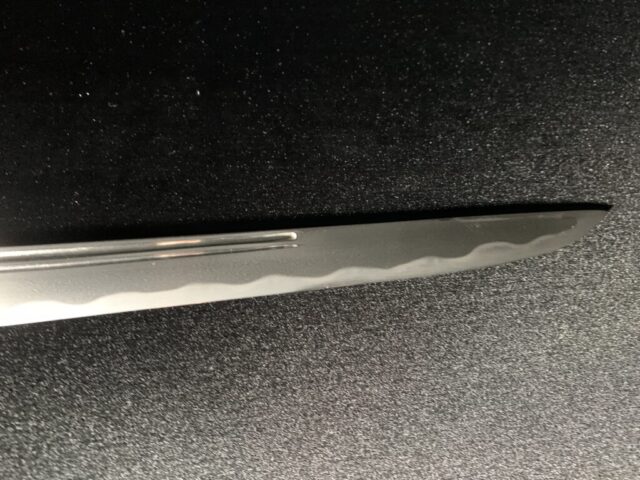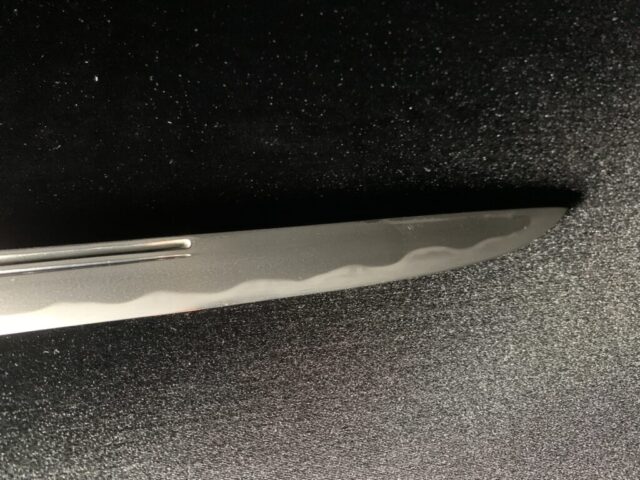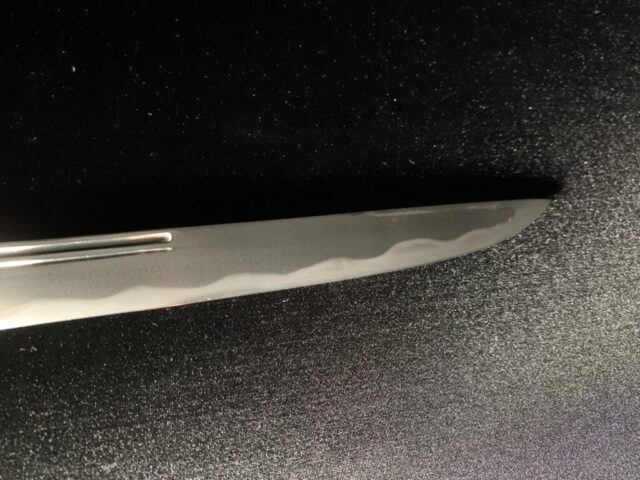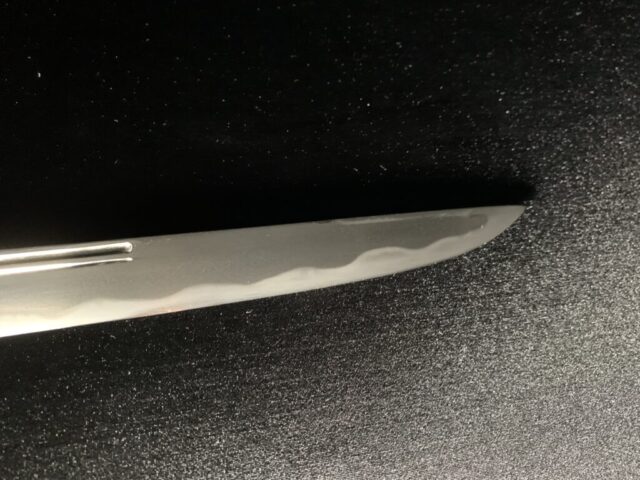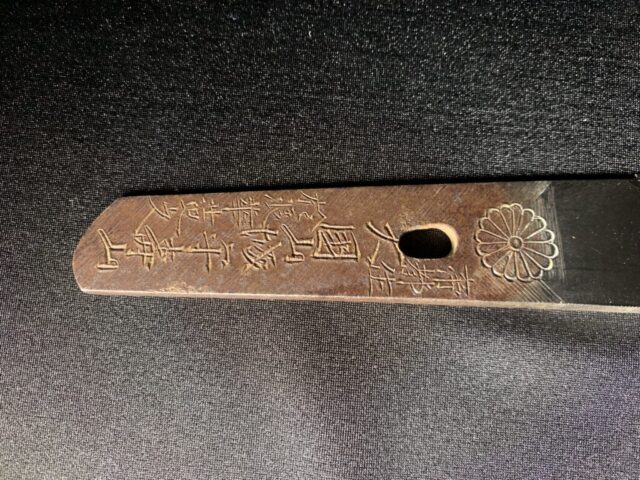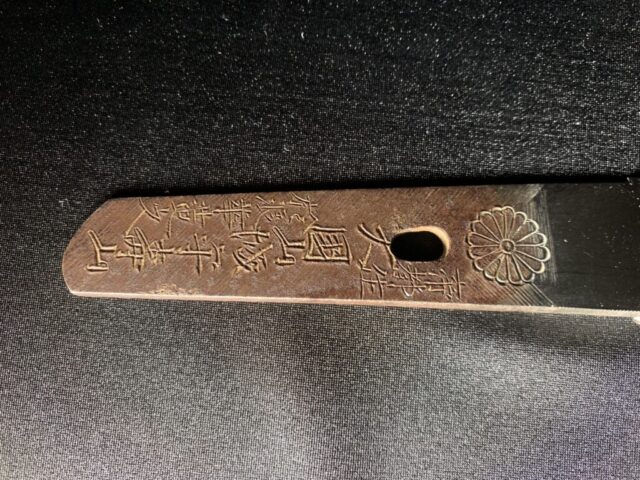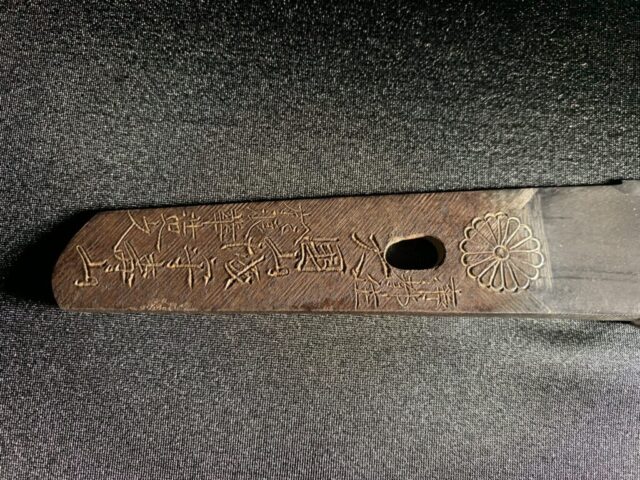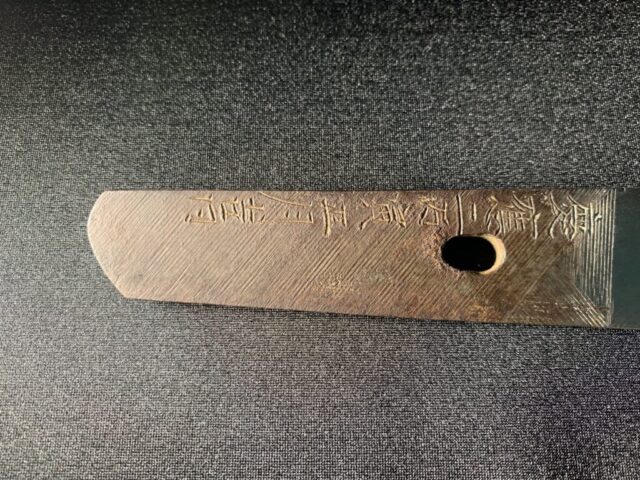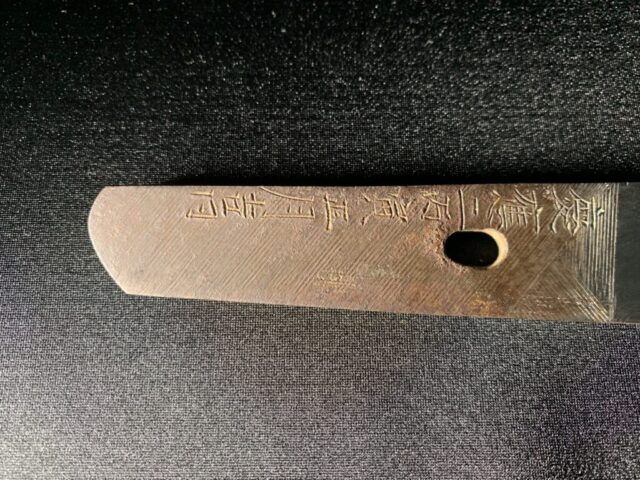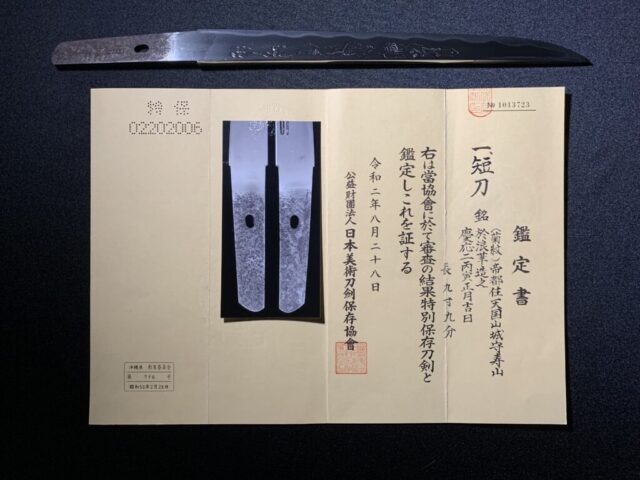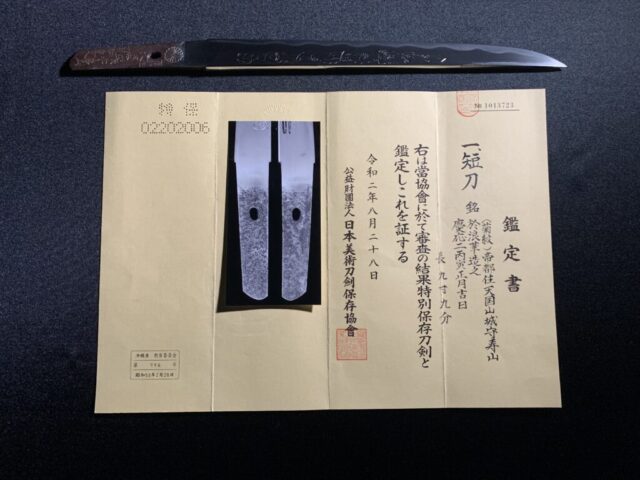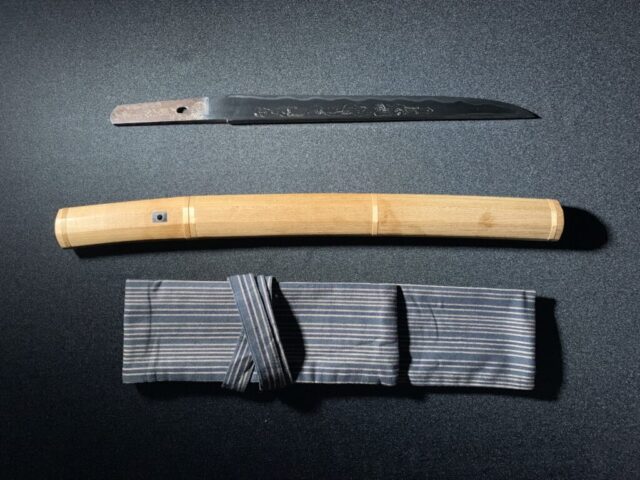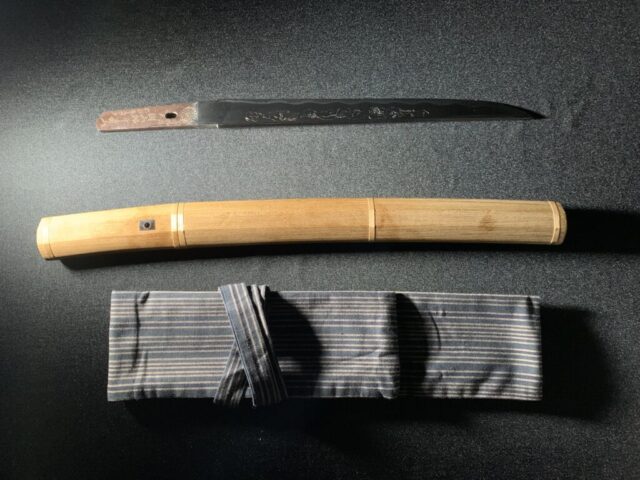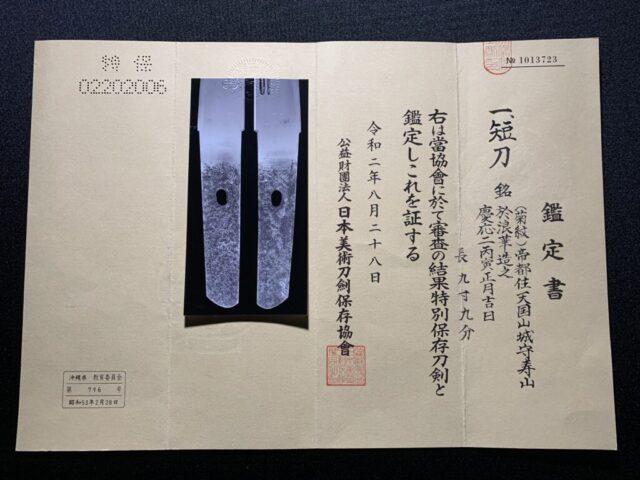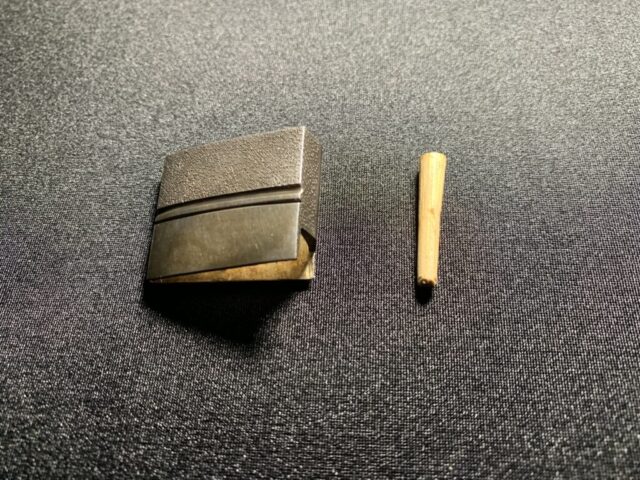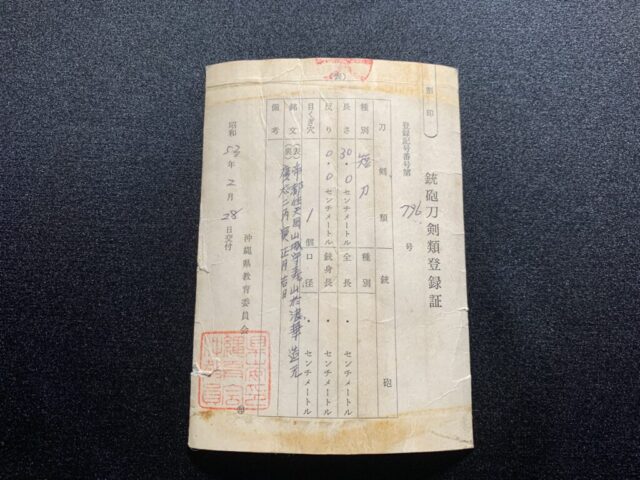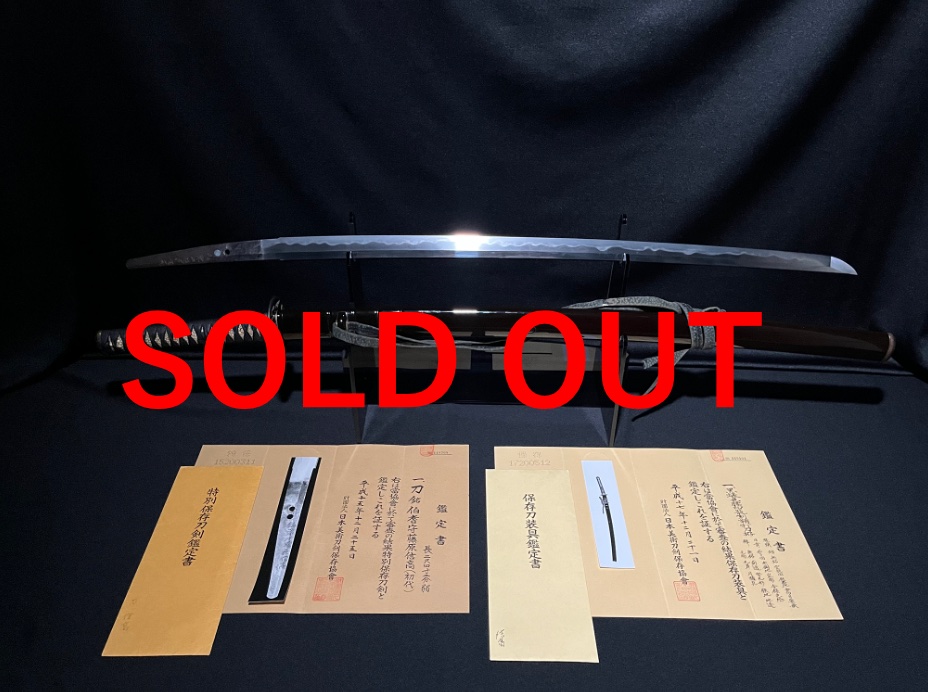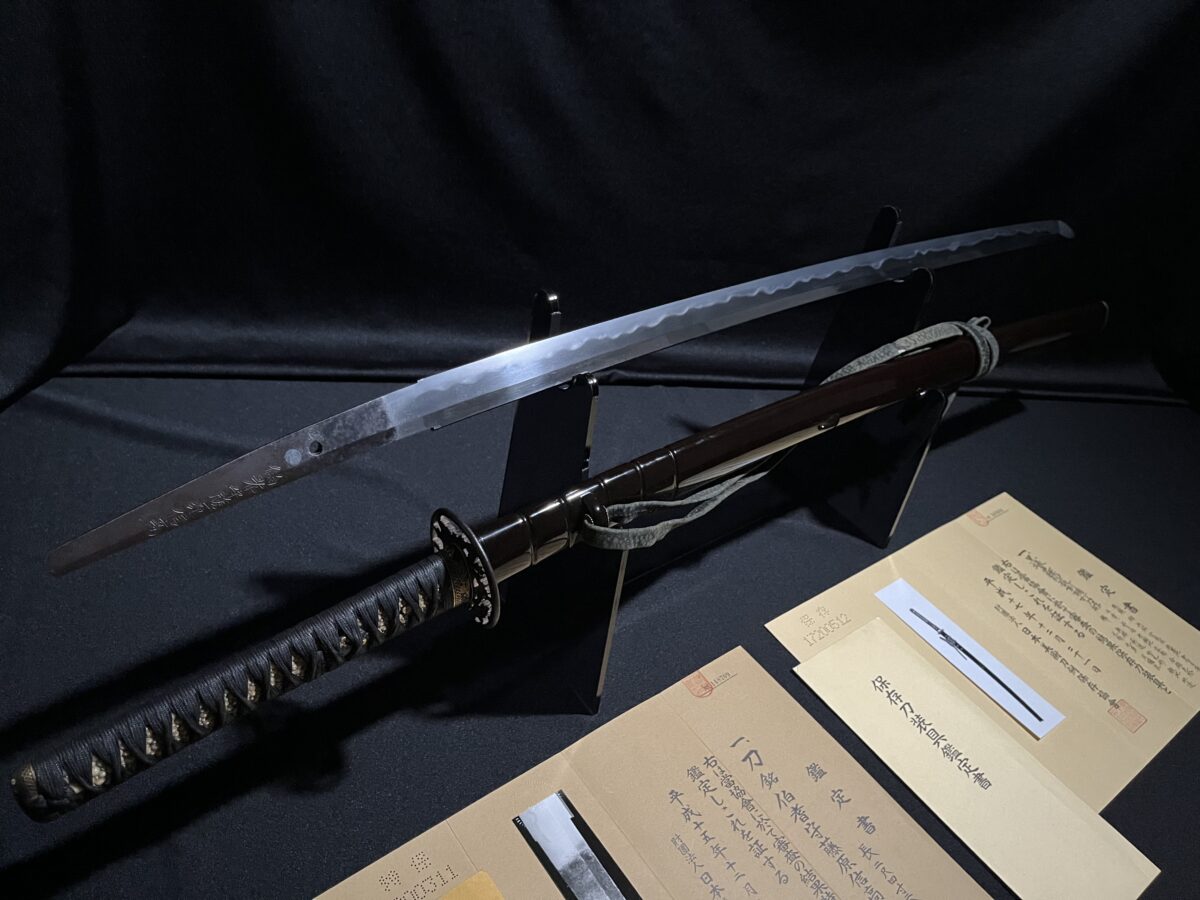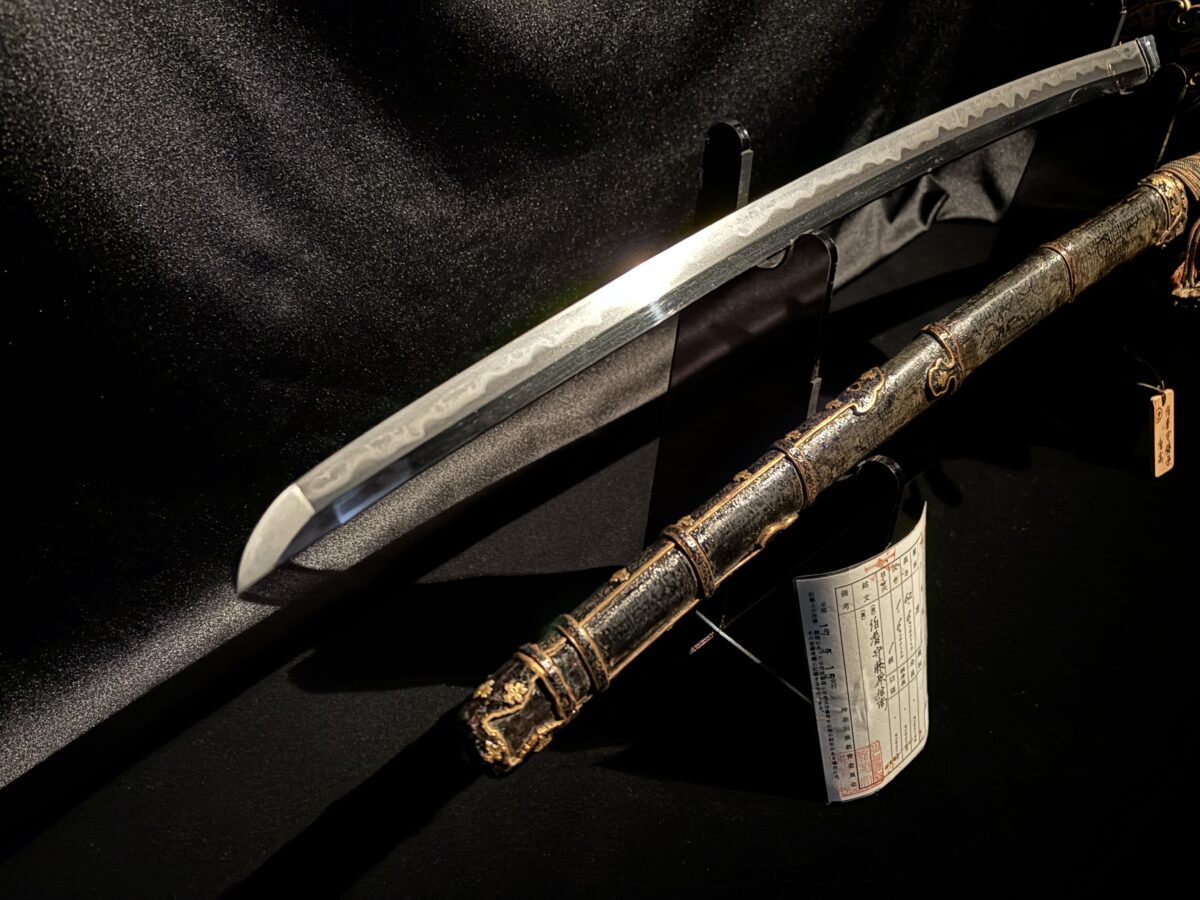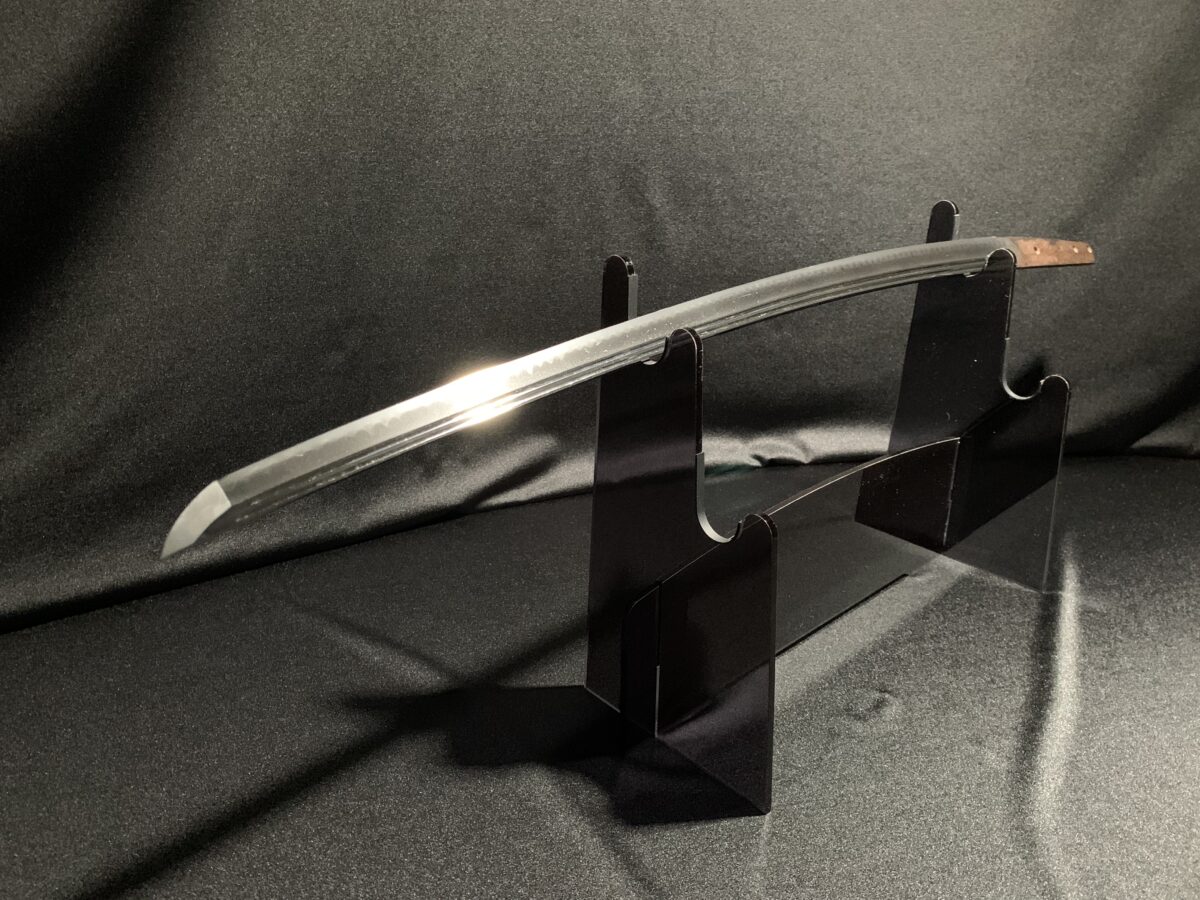Juzan(寿山) – Authentic Tanto(1770-1850)
Description
From the Katana Enthusiast

This is a beautifully crafted tanto featuring a carved dragon motif known as “Kurikara(倶利伽羅)”.
Its elegant design pairs beautifully with other swords when displayed together, making it a great choice even for those who have never purchased a tanto before.
Katana Certificate of Authenticity and Registration
This Katana has been certified as a Tokubetsu Hozon Token (特別保存刀剣) by the NBTHK (Nihon Bijutsu Token Hozon Kyokai), Japan’s most prestigious sword appraisal organization.
Tokubetsu Hozon Token is a higher classification than Hozon Token (保存刀剣), indicating superior historical and artistic value.
The official certificate is included in the set.
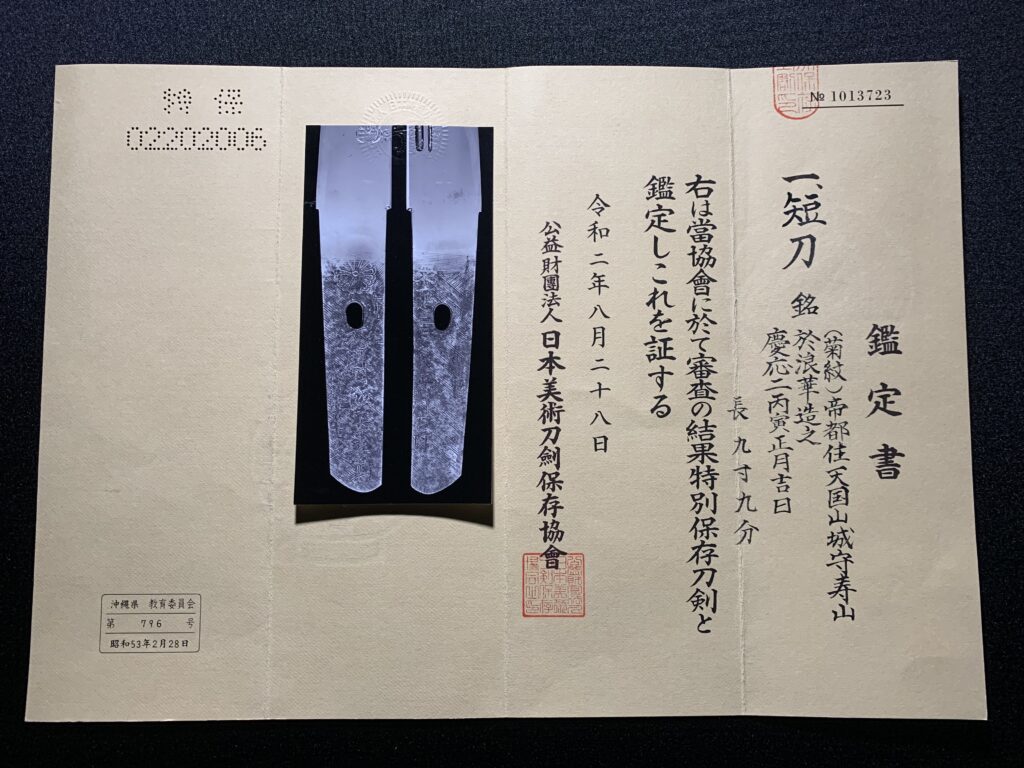
All Real Katanas are registered with the Board of Education of the prefecture in which they are located.
Please note that the original registration certificate must be returned to the Board of Education prior to export, but a copy will be enclosed with your purchase.
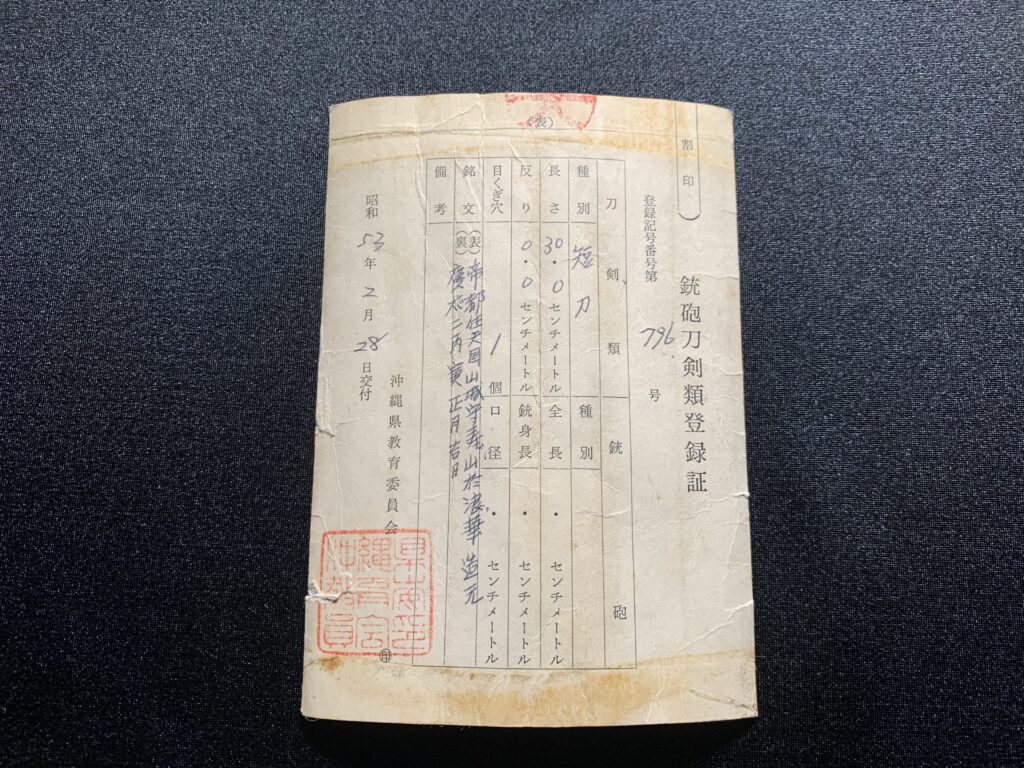
Each part of the Katana
1. Toshin(刀身)
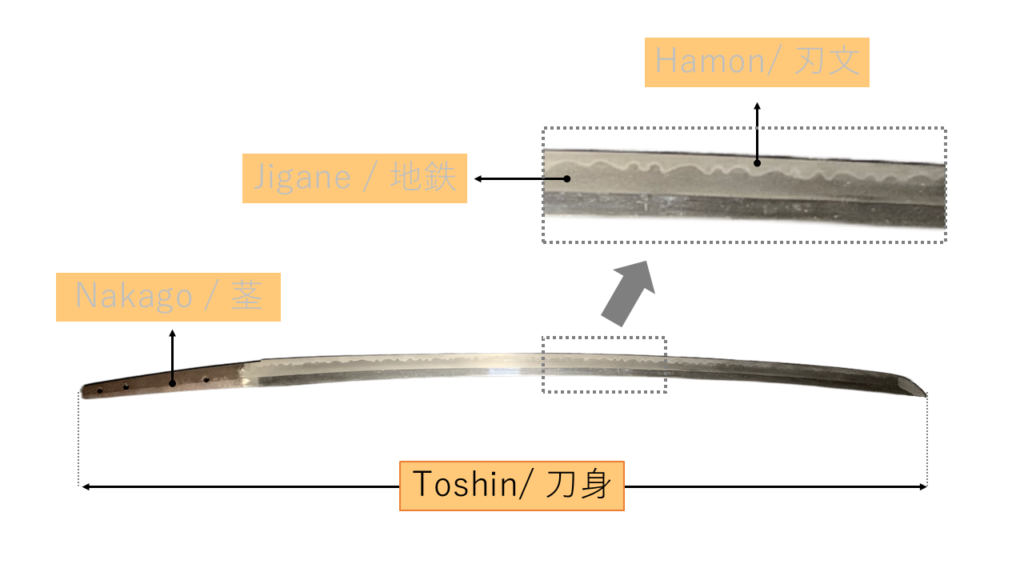
The Toshin refers to the entire blade of the Katana.
When evaluating a Katana, the blade’s length—and particularly its sori (curvature)—is a key point of appreciation.
The sori is what enables the Japanese sword to remain unbreakable and unbendable, while also allowing it to cut through objects with remarkable efficiency and minimal force.
If you’re interested in the scientific background of this, we explain the theory in detail in the following article:
Curved for a Reason: The Hidden Function of Authentic Katana’s Shape
【Toshin of This Katana】
Blade Length (Nagasa): 30.0cm
Width at Base (Motohaba) : 2.93cm
Thickness at Base (Motokasane) : 0.85cm
2. Hamon(刃文)
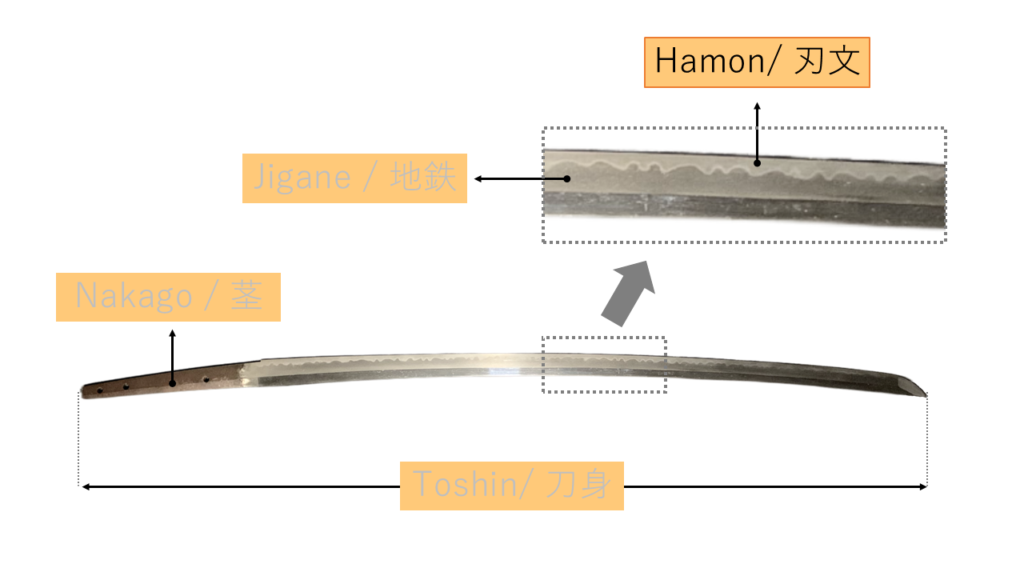
The Hamon is a white, wave-like pattern that appears along the edge of an authentic Katana blade.
There are two primary types of Hamon: the straight-line Suguha, and the more irregular, wavy Midareba.
While these can be further classified into many subtypes, the Hamon is a key element in sword appraisal, as it reflects the unique characteristics and techniques of the swordsmith.
It’s also one of the most visually enjoyable features of a Katana, making it fun to choose a blade based on the Hamon that resonates with you.
【Hamon of This katana】
3. Jigane(地鉄)
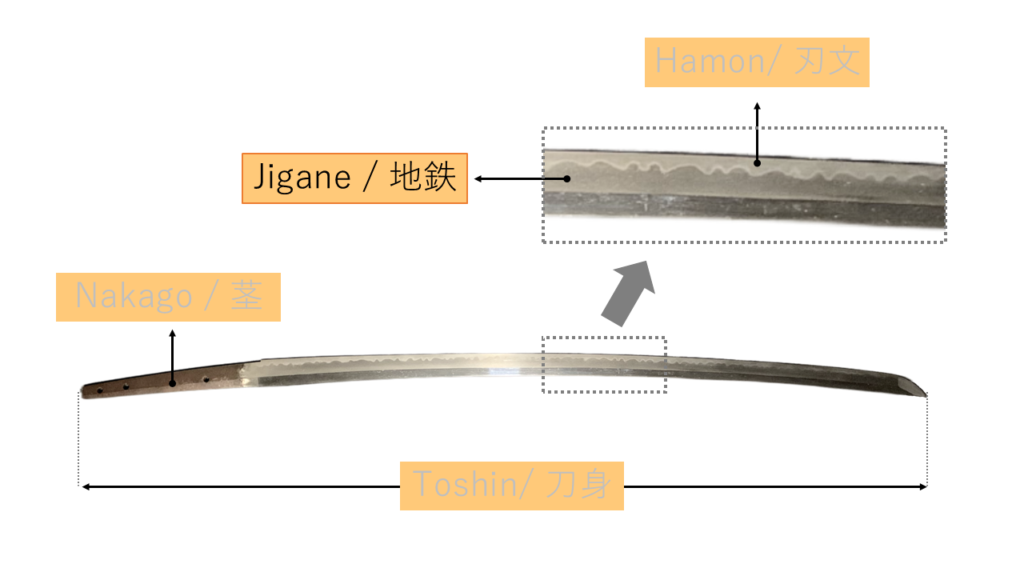
Jigane refers to the intricate surface patterns that appear on the blade of a Katana.
These patterns are created when tamahagane—steel made from iron sand, the raw material—is repeatedly folded and forged.
Each Katana reveals a unique Jigane pattern, offering a window into the artistry and technique of its maker.
【Jigane of this katana】
4. Nakago(茎)
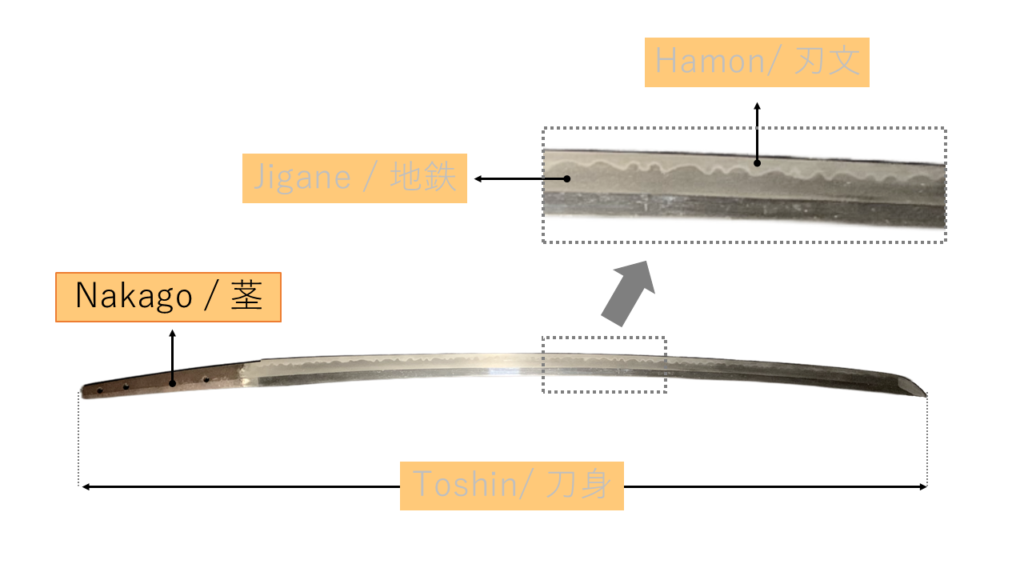
The Nakago is the tang of the Katana—the part of the blade that extends into the handle.
It often bears a mei (銘), or signature, which may include the name of the swordsmith and the date of its creation.
【Nakago of This katana】
A magnificent dragon is carved on the front of the blade, which is called Kurikara (倶利伽羅). This represents an incarnation of Fudo Myoo(不動明王), and is meant to ward off evil.
5. Koshirae(拵え)
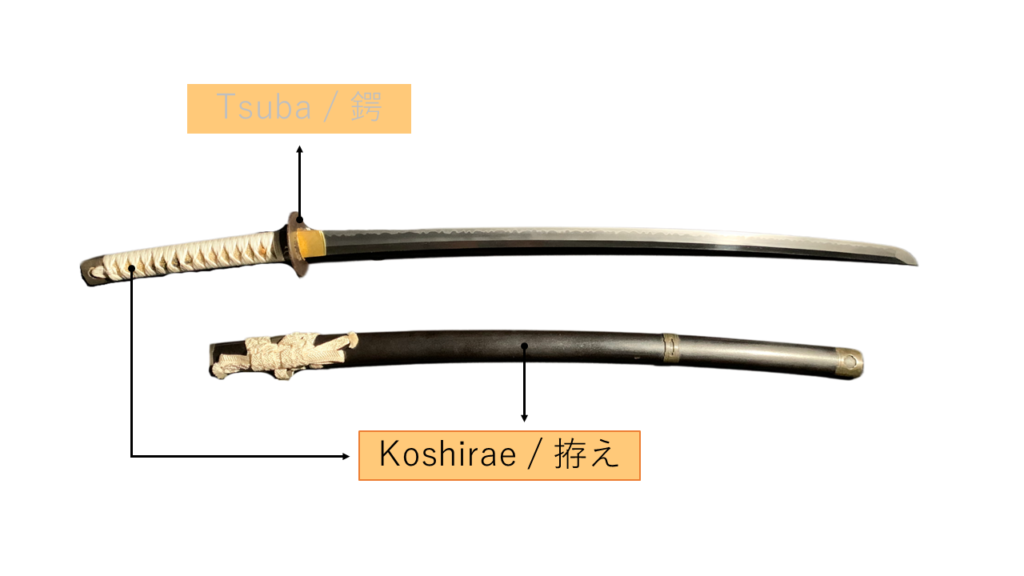
Koshirae refers to the complete exterior mountings of a Katana, including the handle (tsuka), guard (tsuba), and scabbard (saya).
There are two main styles of Koshirae: Uchigatana Koshirae (打刀拵) and Tachi Koshirae (太刀拵). Because each Katana differs in length, curvature, and proportions, a unique Koshirae is custom-made to perfectly match each blade.
The Koshirae itself is considered an important work of art.
We hope you’ll enjoy appreciating it as a complete expression of the Katana’s beauty and balance.
【Koshirae of This Katana】
About Juzan(寿山)
Juzan (寿山) was a swordsmith active in the late Edo period, based in Musashi Province (present-day Tokyo region).
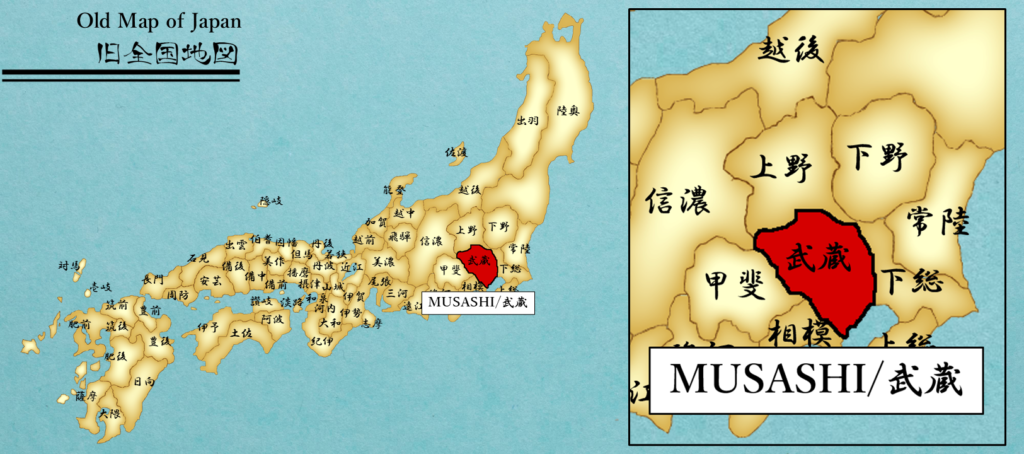
Juzan is known for carving a chrysanthemum crest into the Nakago (the tang of the blade). This tanto also clearly features the crest engraved on its tang.
He is said to be a descendant of the great swordsmith Myouju (明寿).
From the Gokaden Lineage: Soshu-den Roots
Many Japanese swords trace their roots back to one or more of the five major traditional schools of swordsmithing, known as the Gokaden(五箇伝).

These five traditions—Yamato, Yamashiro, Bizen, Soshu, and Mino—each developed in different historical provinces and are known for their distinct styles and characteristics.
This sword is rooted in the Soshu-den(相州伝) tradition, which developed in Sagami(相模) Province.
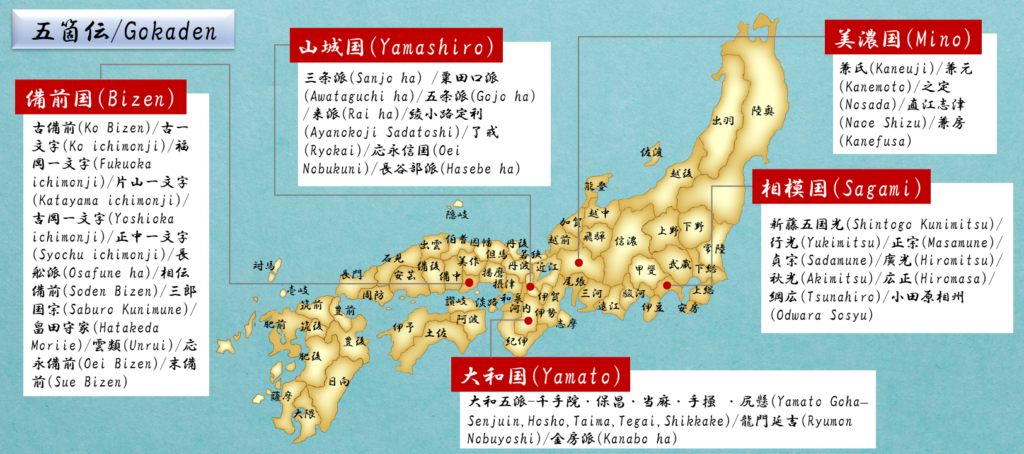
The Soshu-den tradition emerged in the Kamakura period in Sagami Province (present-day Kanagawa Prefecture), particularly around the city of Kamakura, which was the seat of the shogunate at the time. Under the patronage of powerful military rulers, Soshu-den attracted many highly skilled smiths and became a hotbed for innovation in swordmaking.
Unlike the older schools that emphasized simplicity and formality, Soshu-den was known for pushing the boundaries of craftsmanship, often producing swords with bold temper lines and complex forging techniques.
Its rise marked a shift toward more dynamic and expressive styles, which matched the demands of warriors during a turbulent and militarized era.
Today, swords in the Soshu tradition are celebrated for their commanding presence and artistic impact. Even without delving into specific features, a blade rooted in Soshu-den often carries with it an air of power, innovation, and warrior spirit—qualities that continue to captivate collectors around the world.
Buyer’s Guife
Authentic Katanas are limited in number, and we hope each one finds its way to a collector who truly appreciates its value.
Before making a purchase, please take a moment to review our [Buyer’s Guide] for important information.
Shipping Information
1.Time Required for Delivery
This is a truly domestic Japanese sword that has never left Japan.
In order to export it overseas, we must obtain an official export permit from the Agency for Cultural Affairs of Japan.
It typically takes around 25 business days from the time of payment until the export process begins.

After shipment, delivery usually takes 7 to 20 days, depending on the destination country.
2.Shipping Charges
Shipping is free of charge.
We offer international shipping to most countries, with the exception of China and Russia.
3.Regarding Imports
Please check with your local customs office regarding regulations on importing Japanese swords.
We are not responsible for delays, rejections, or seizures by customs in the destination country.
For more details, please refer to our dedicated [Shipping Information] page.
Payment
You may complete your purchase via PayPal or by making a direct bank transfer to our account.
All prices are tax-exempt and do not include Japanese consumption tax, as this policy applies to international purchases only.
Please note that customs duties or import taxes may apply depending on your country’s regulations.
Buyers are responsible for any such charges.
For more details, please refer to our dedicated [Payment] page.
Frequently Asked Questions (FAQ)
If you have further questions, feel free to contact us directly.
Do you ship internationally?
Yes, we ship authentic Japanese swords worldwide. Even if we do not have a delivery record to your country, we will do our best to arrange secure delivery.
Currently we do not ship to China or Russia.
Is shipping really free?
Yes. All listed prices include complimentary international shipping. No additional delivery fees will be charged.
How long will it take to receive my sword?
Because we must obtain export approval from Japan’s Agency for Cultural Affairs, it takes about 25 business days to begin shipping. Including transit time, please allow 1–2 months for delivery.
Are the swords already exported items?
No. Every sword we offer has remained in Japan since its creation and is being exported for the first time.
Are the swords legally exported?
Absolutely. We follow all Japanese regulations and obtain official export permits before shipment.
Do I have to pay customs duties or taxes?
Import duties or taxes may be levied by your country’s customs authority. Buyers are responsible for any such charges. Please check locally in advance.
Can I return a sword after purchase?
Returns and exchanges will not be accepted unless agreed upon between the Company and the User.
How do you select the swords you sell?
Our team consists of katana enthusiasts with backgrounds in metallurgy and history. We hand-select each blade for authenticity, condition, and cultural value.
How can I trust that the sword is real?
All swords are genuine antiques, many with registration or appraisal documents. We do not handle replicas or mass-produced blades.
Are these swords actually sharp and functional?
Yes. Our swords are authentic Japanese katana forged by traditional methods and possess a level of sharpness that has been revered for centuries. They are not decorative replicas—they are real blades capable of cutting. Please handle with the utmost care to avoid injury or damage.
I’m looking for something specific. Can I request it?
Certainly. Please contact us with your requirements—design, smith, school, era, condition—and we will be happy to assist.

